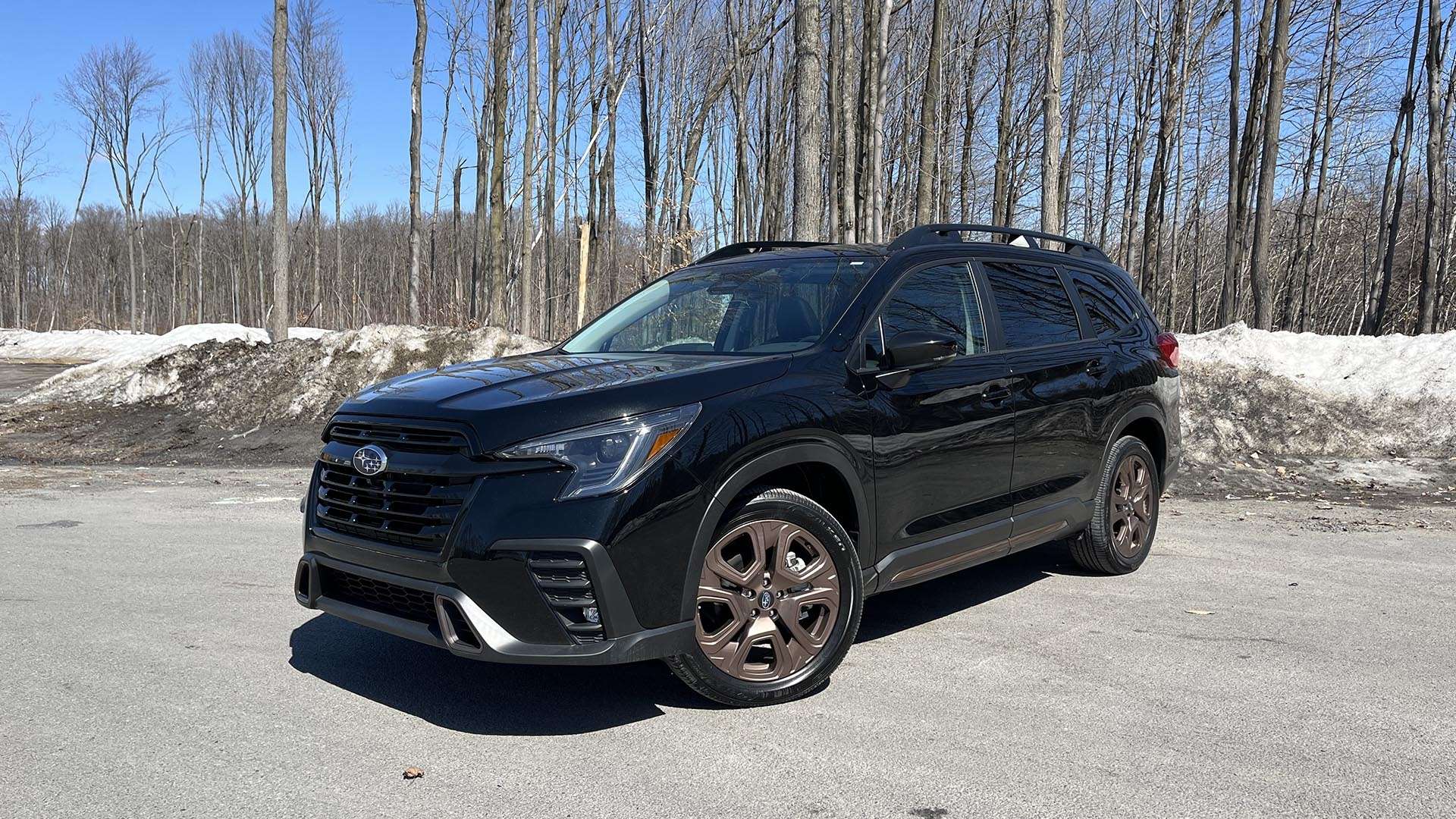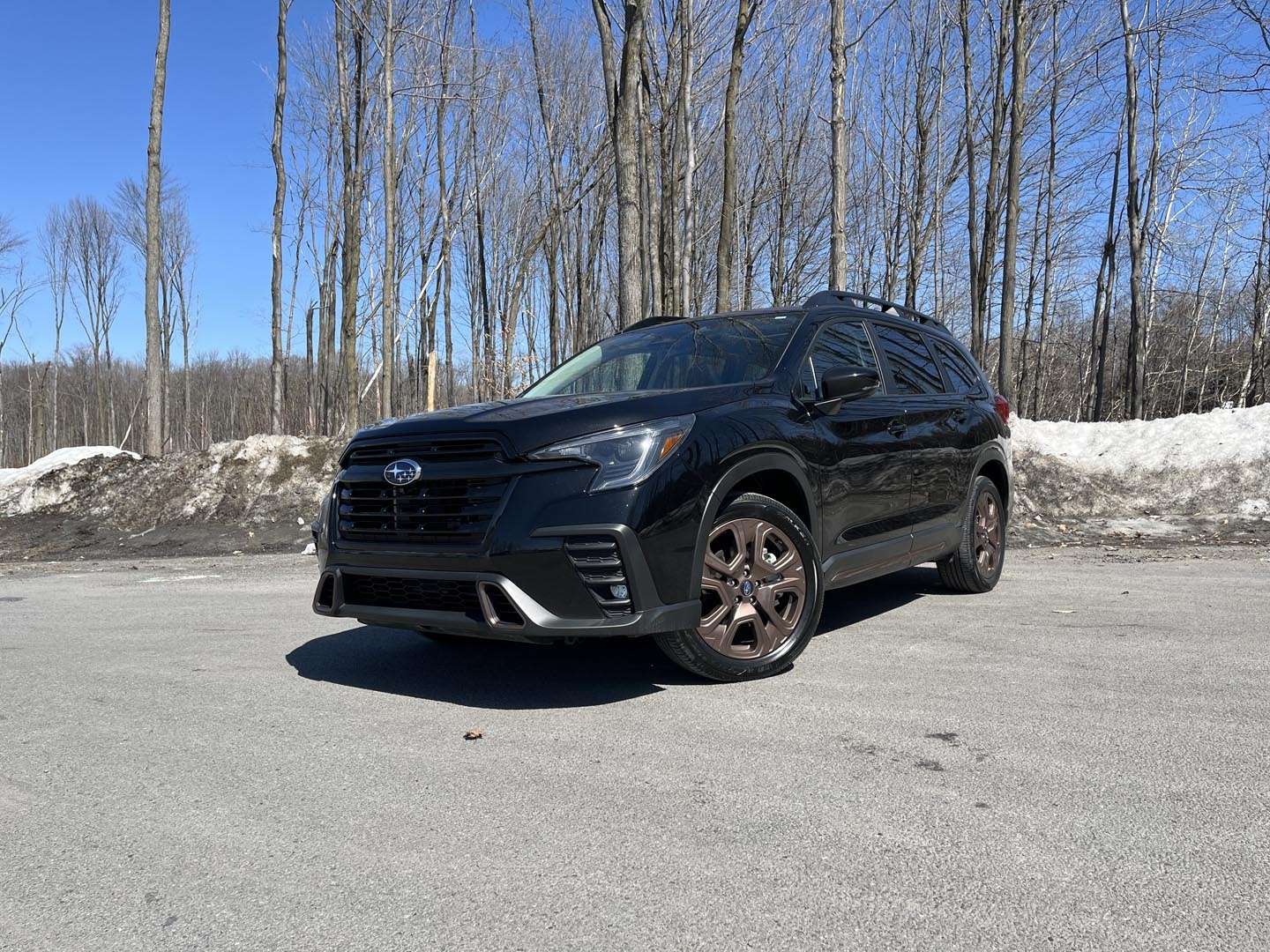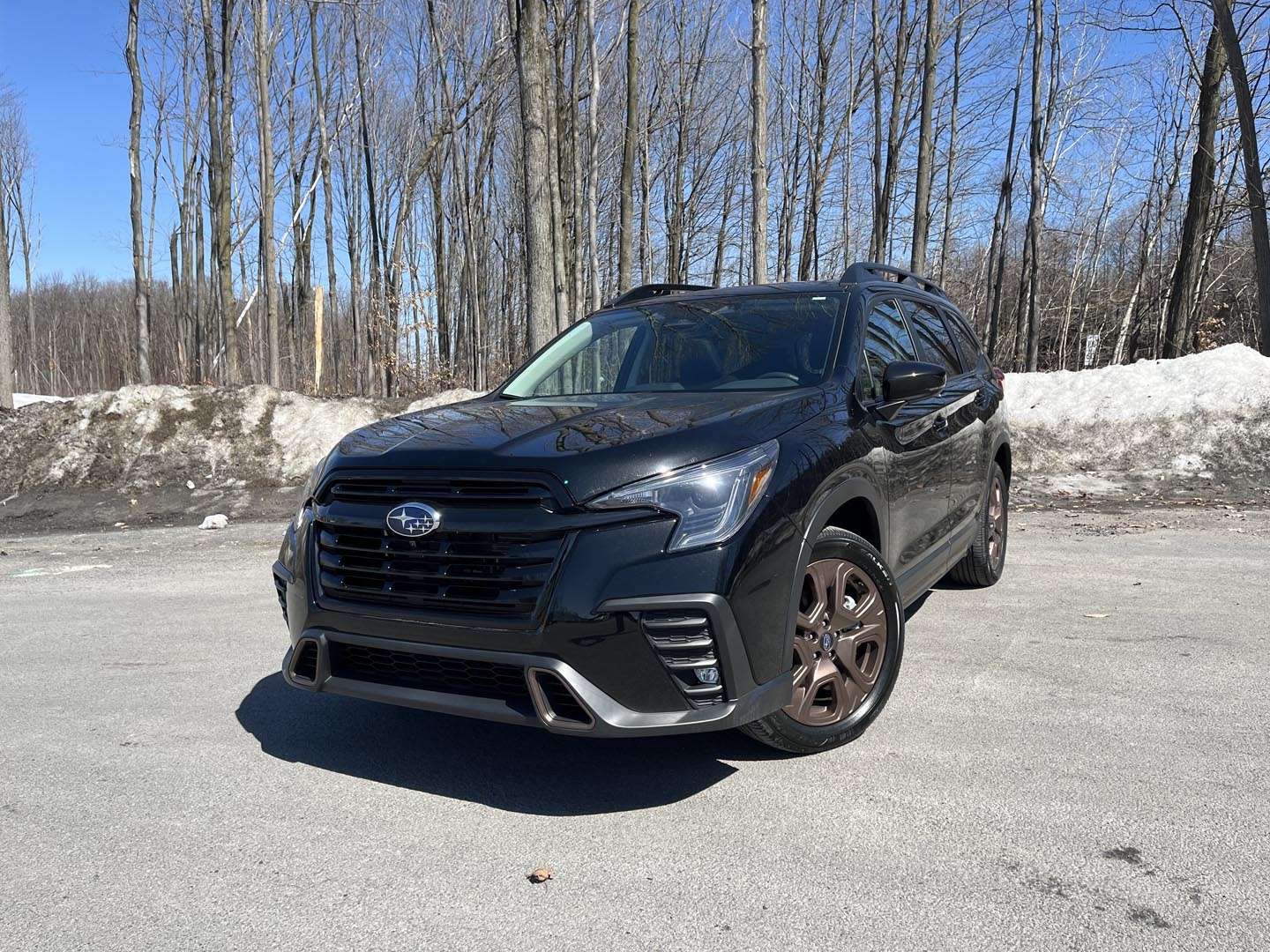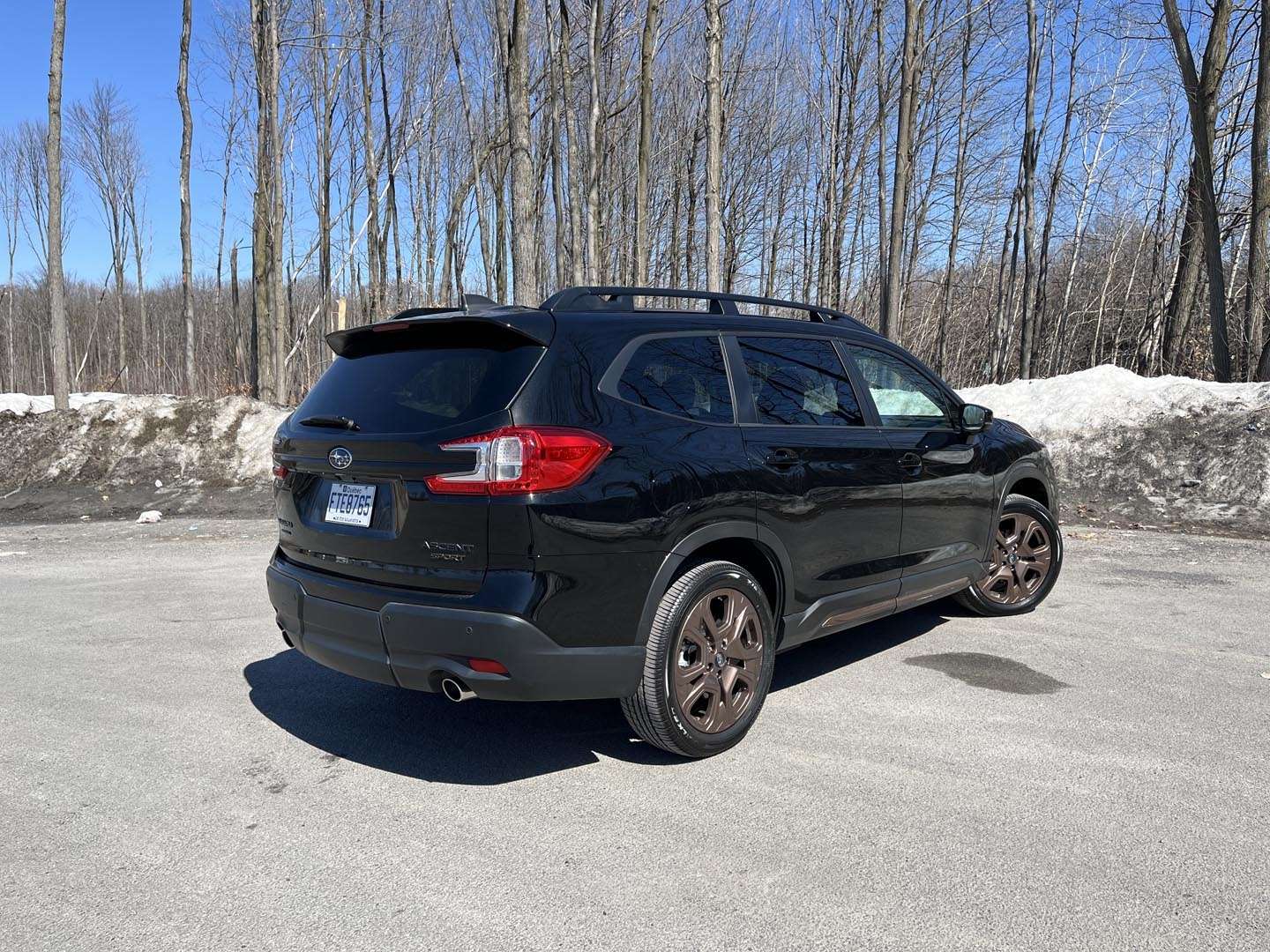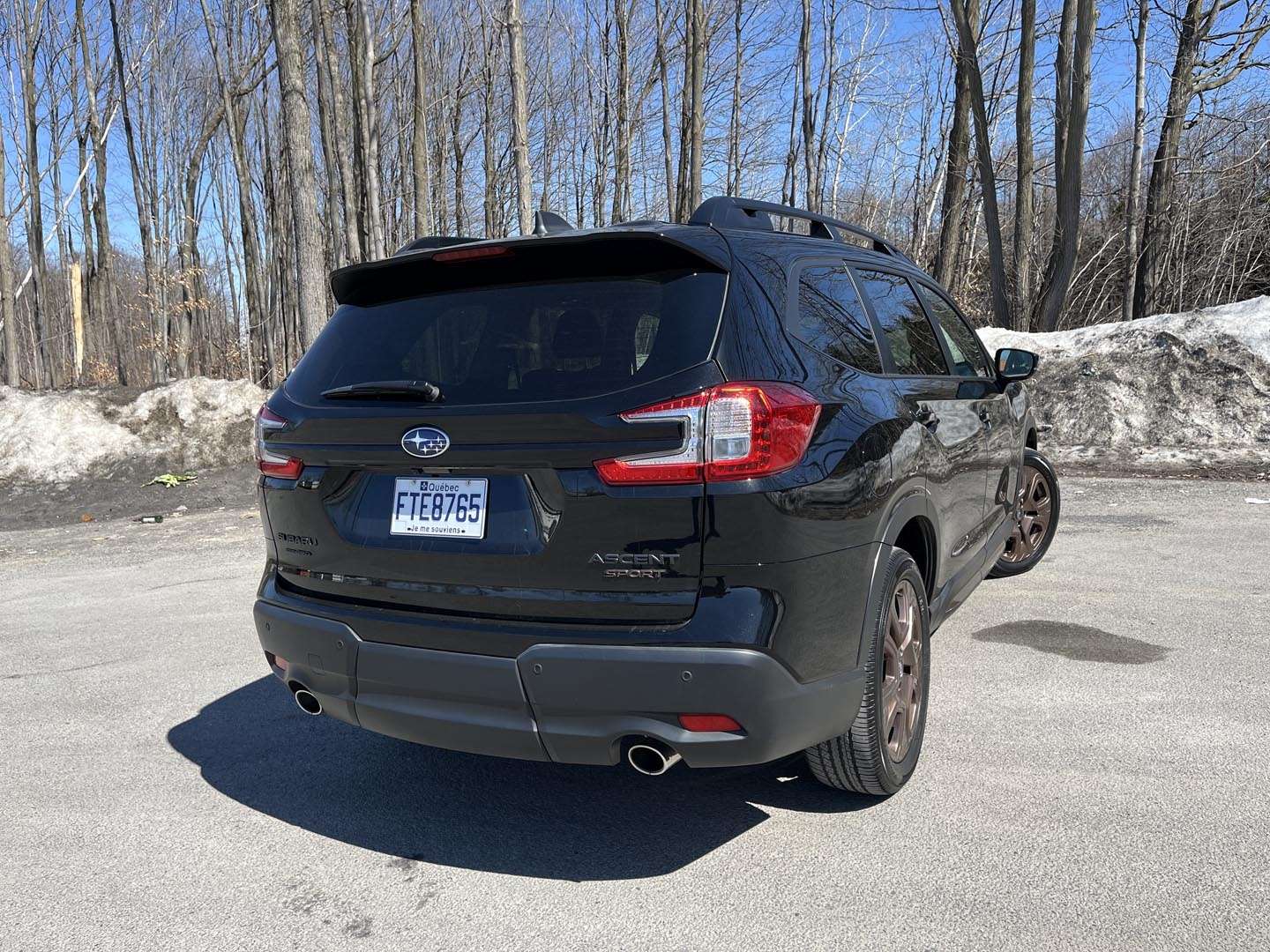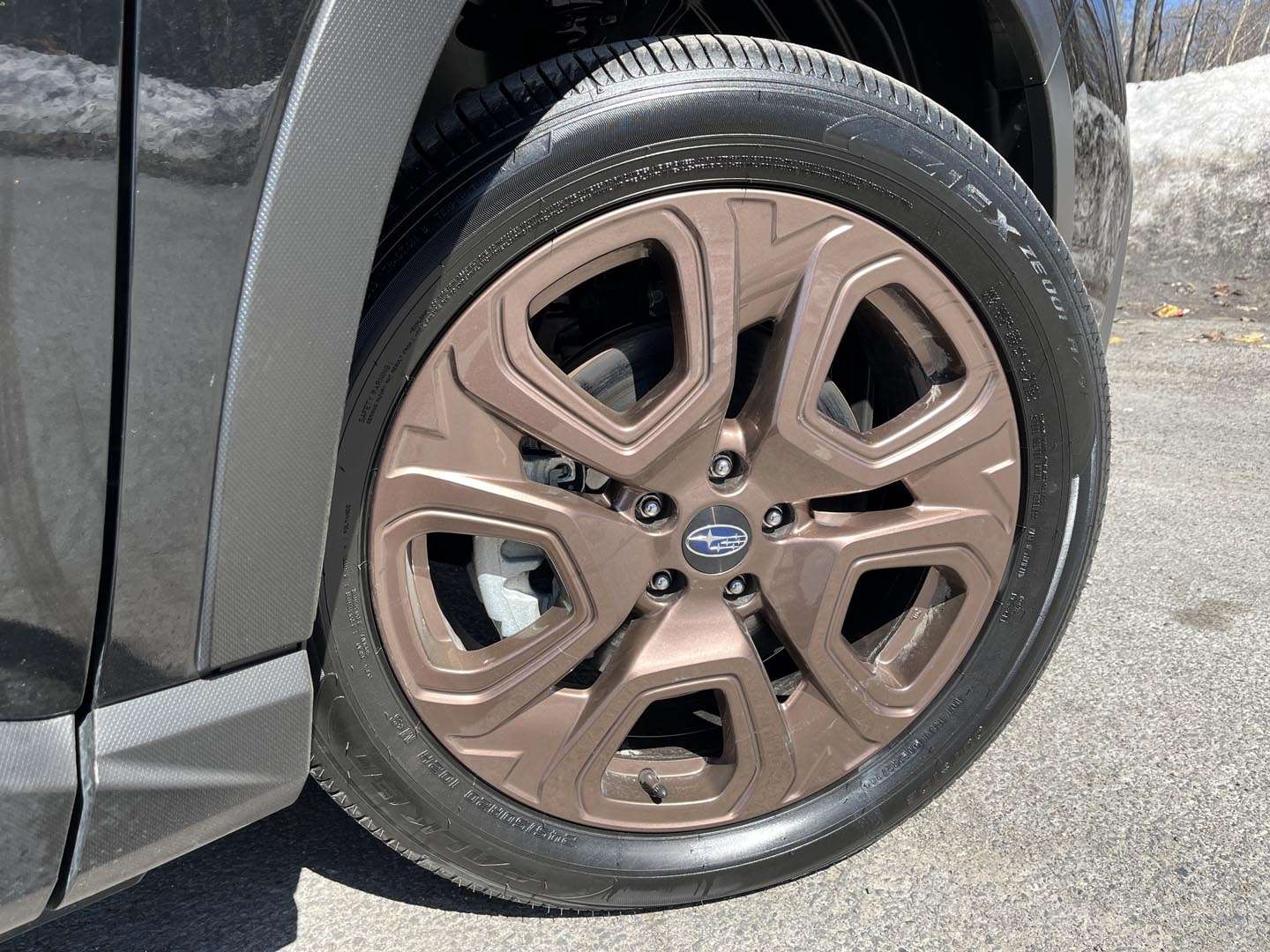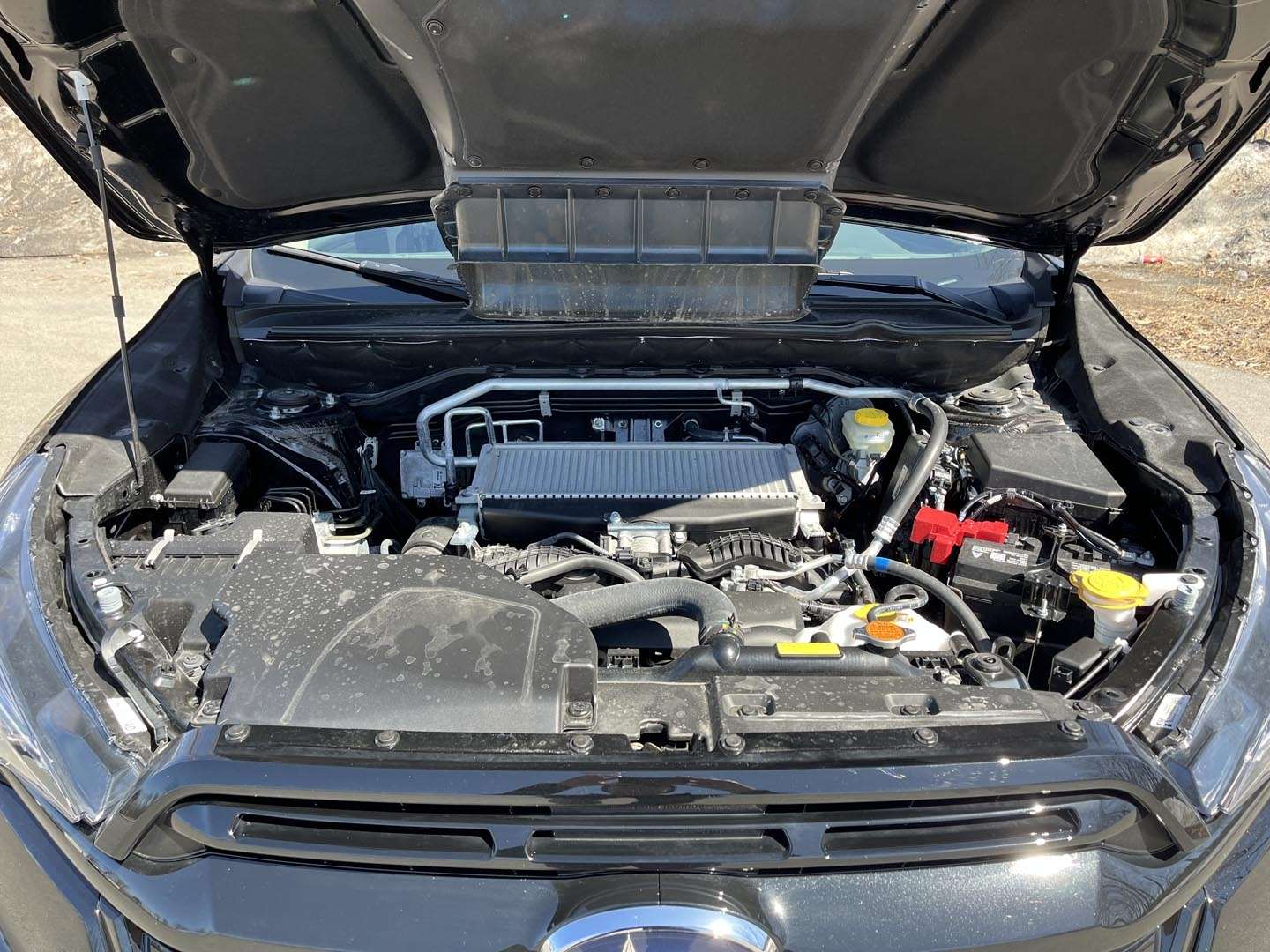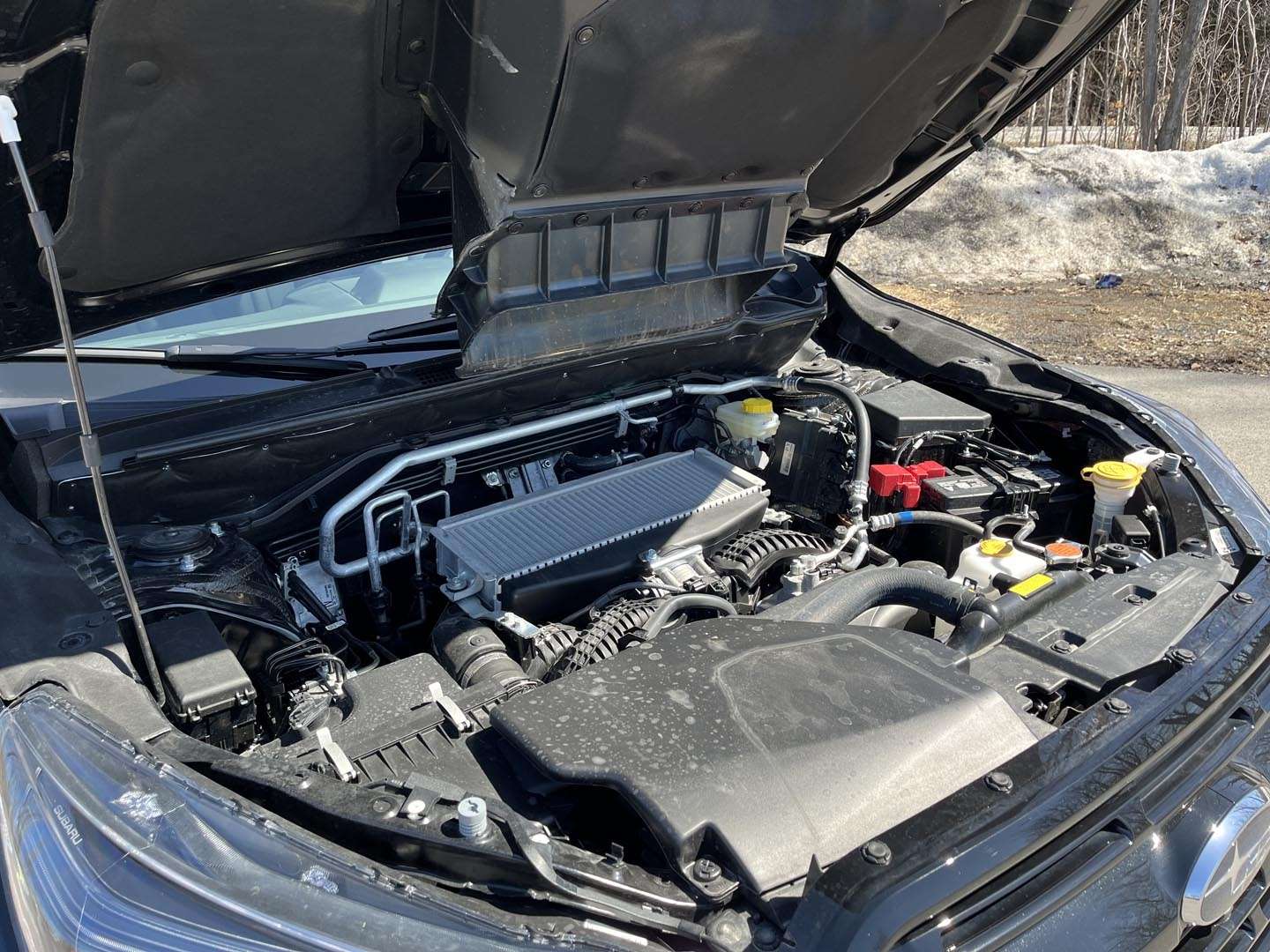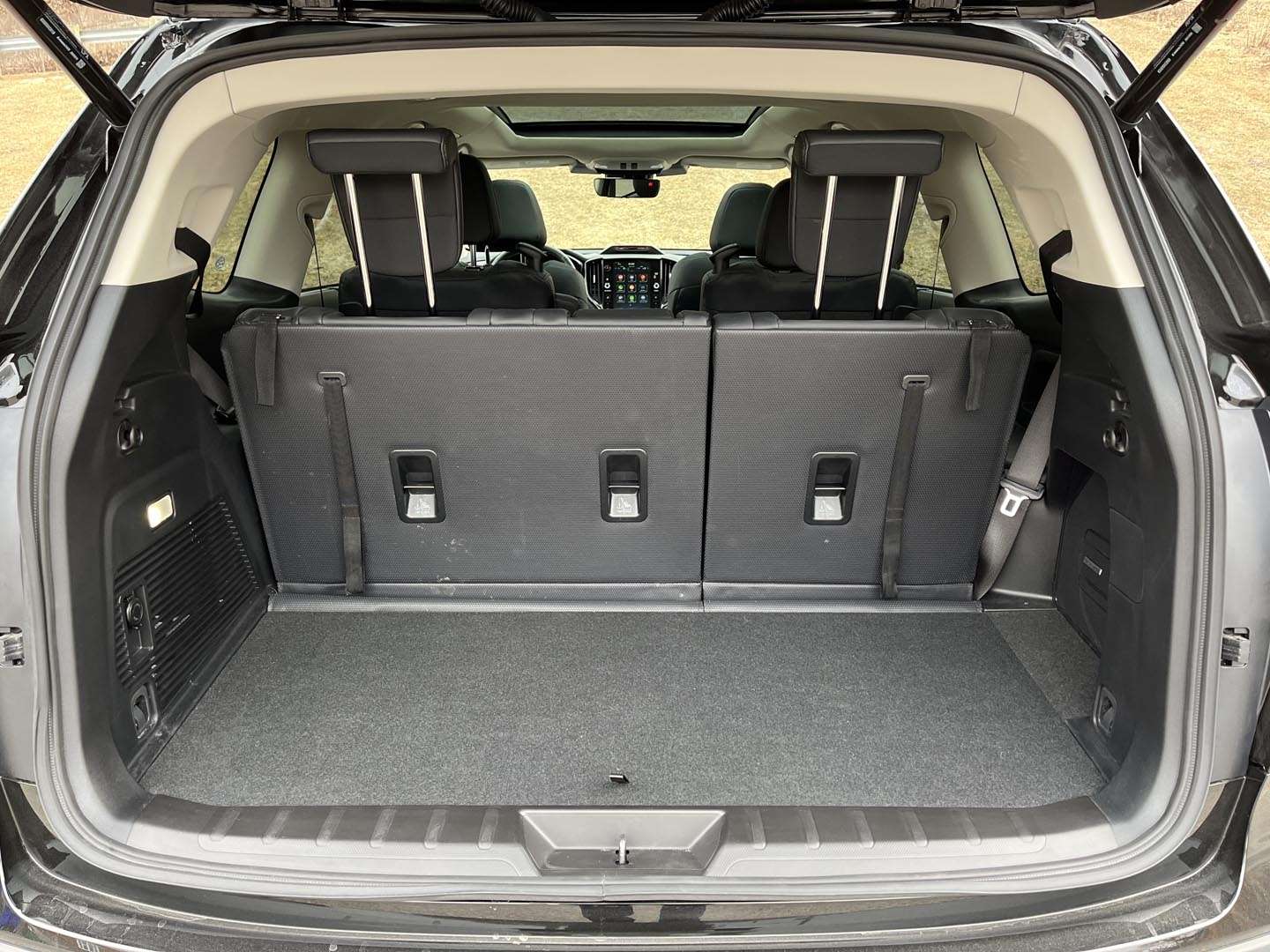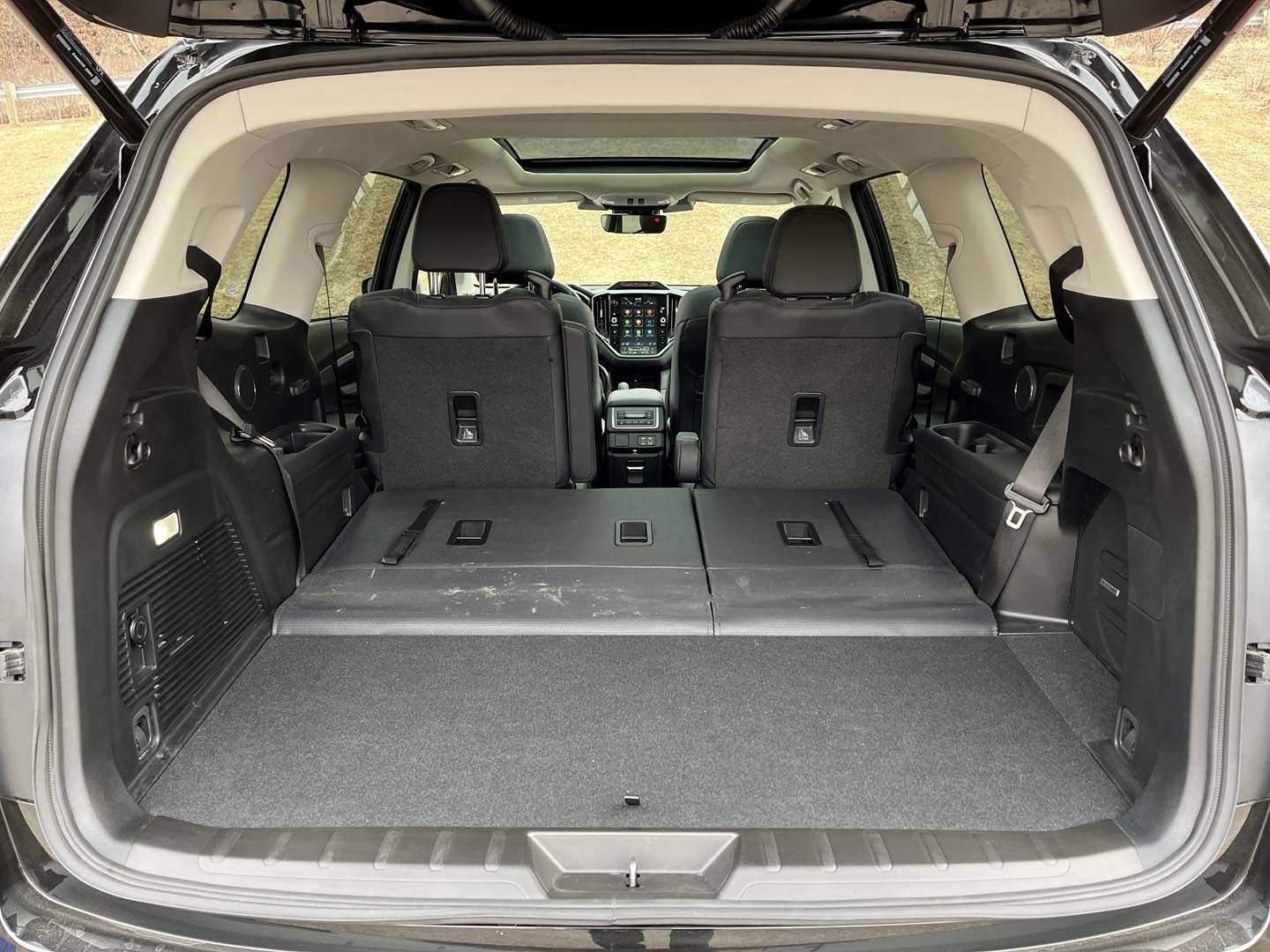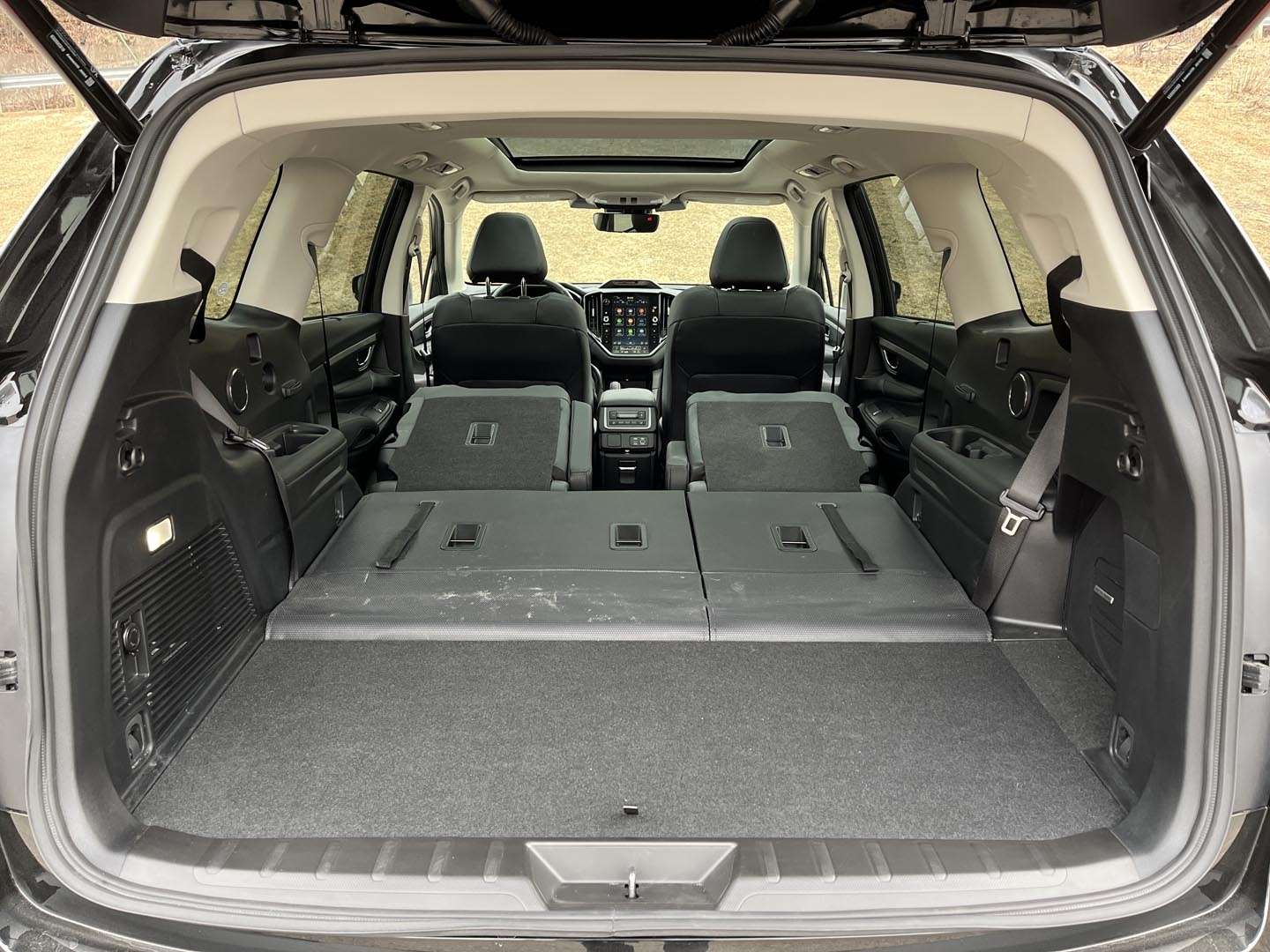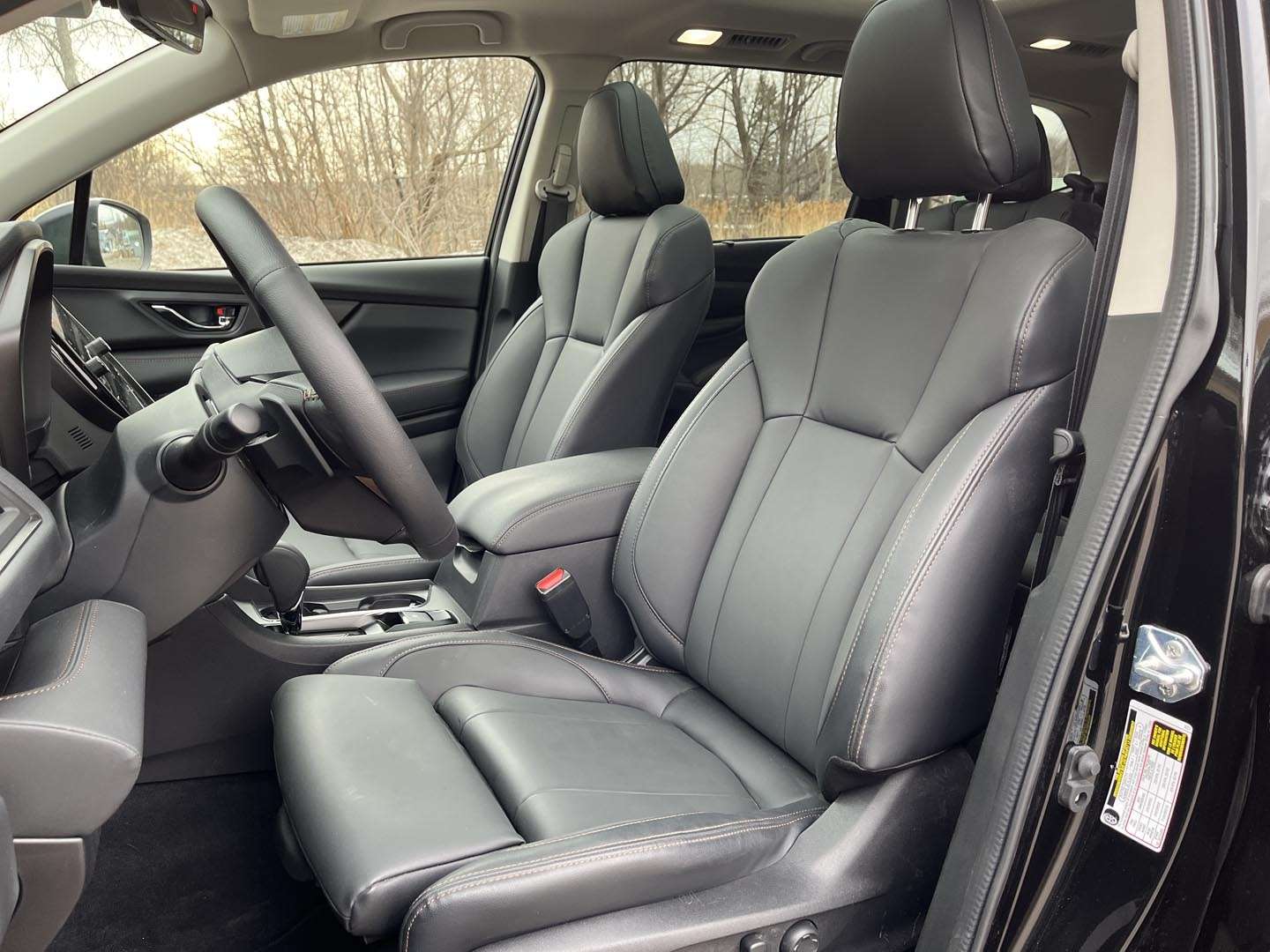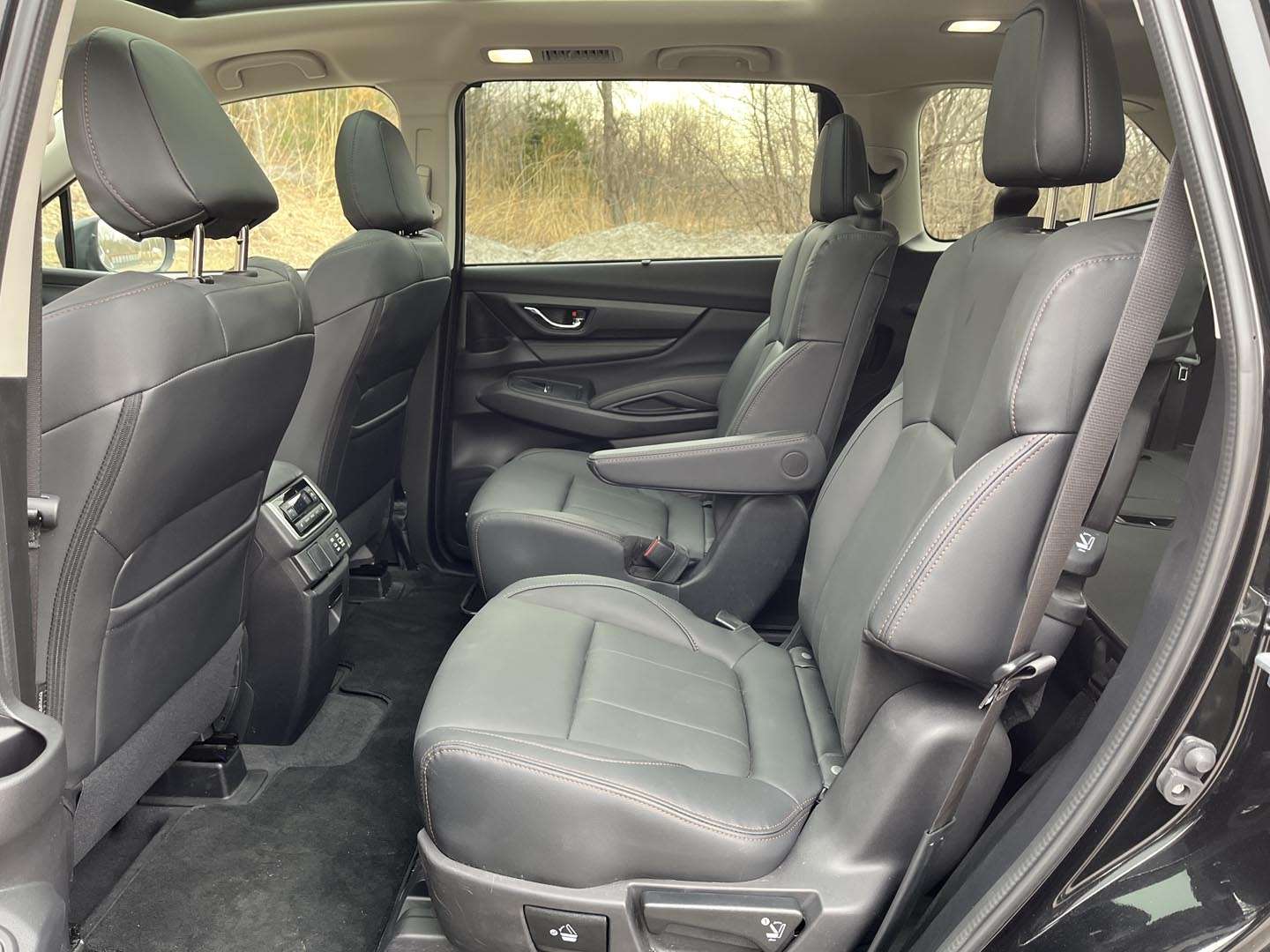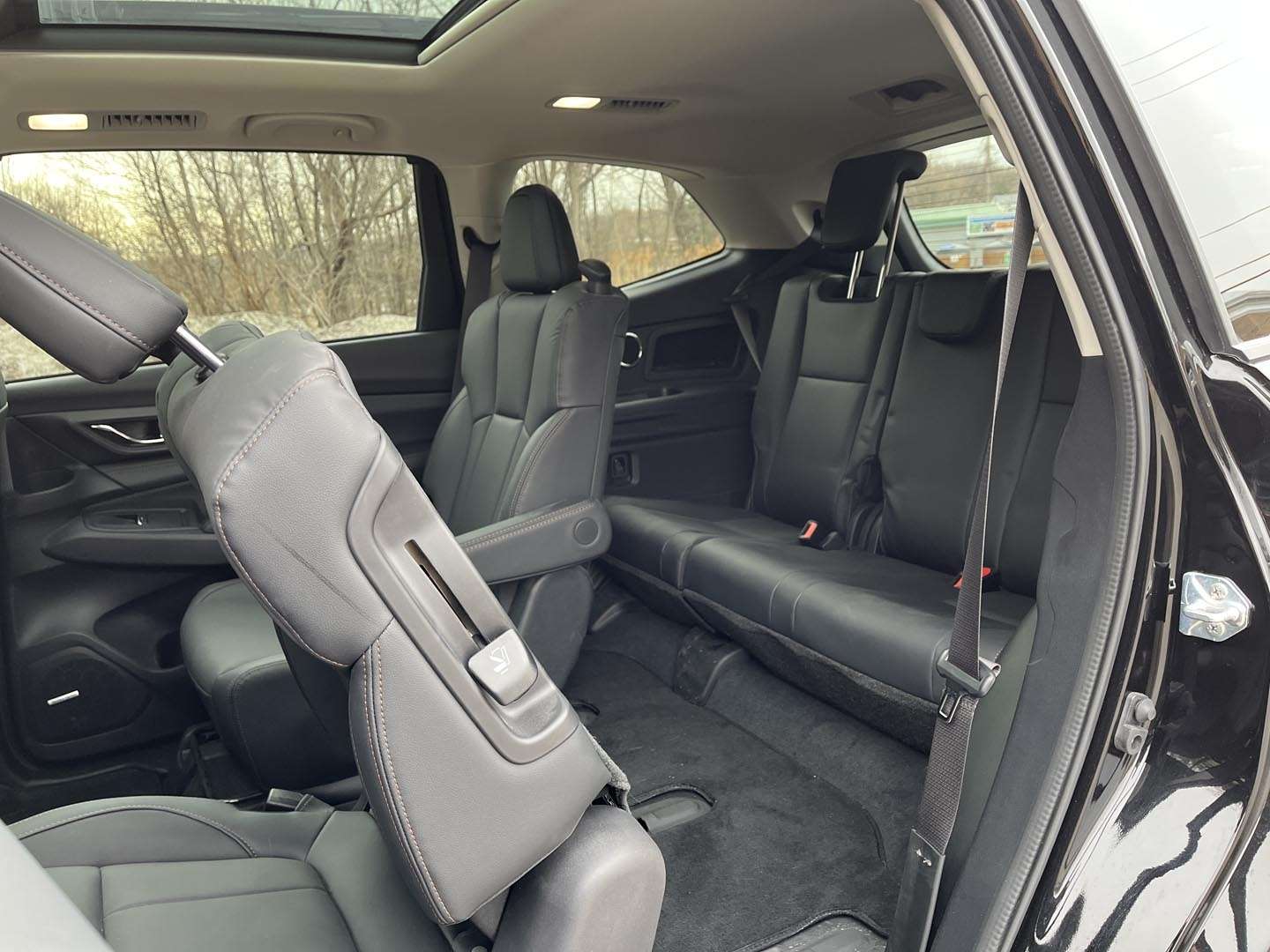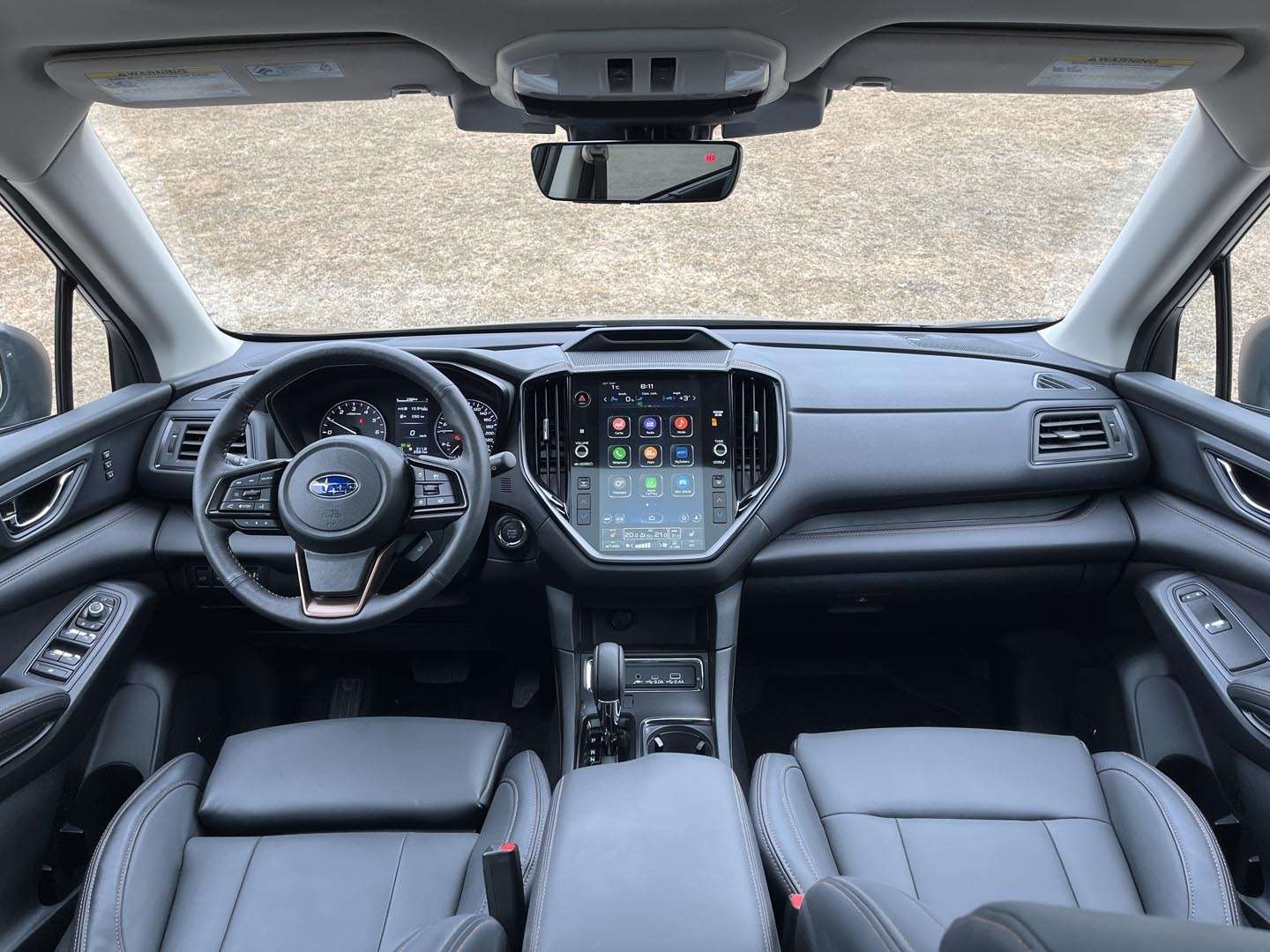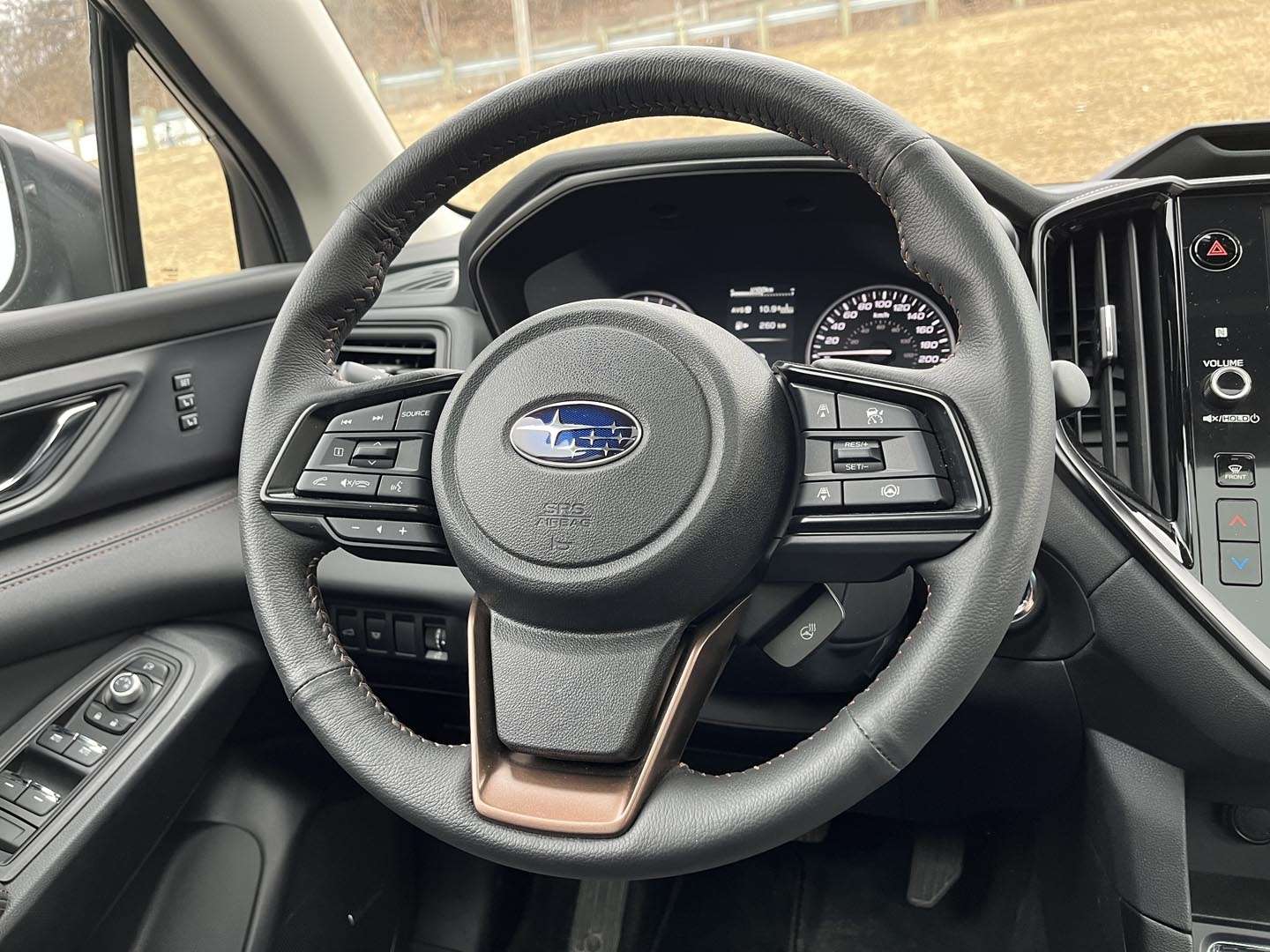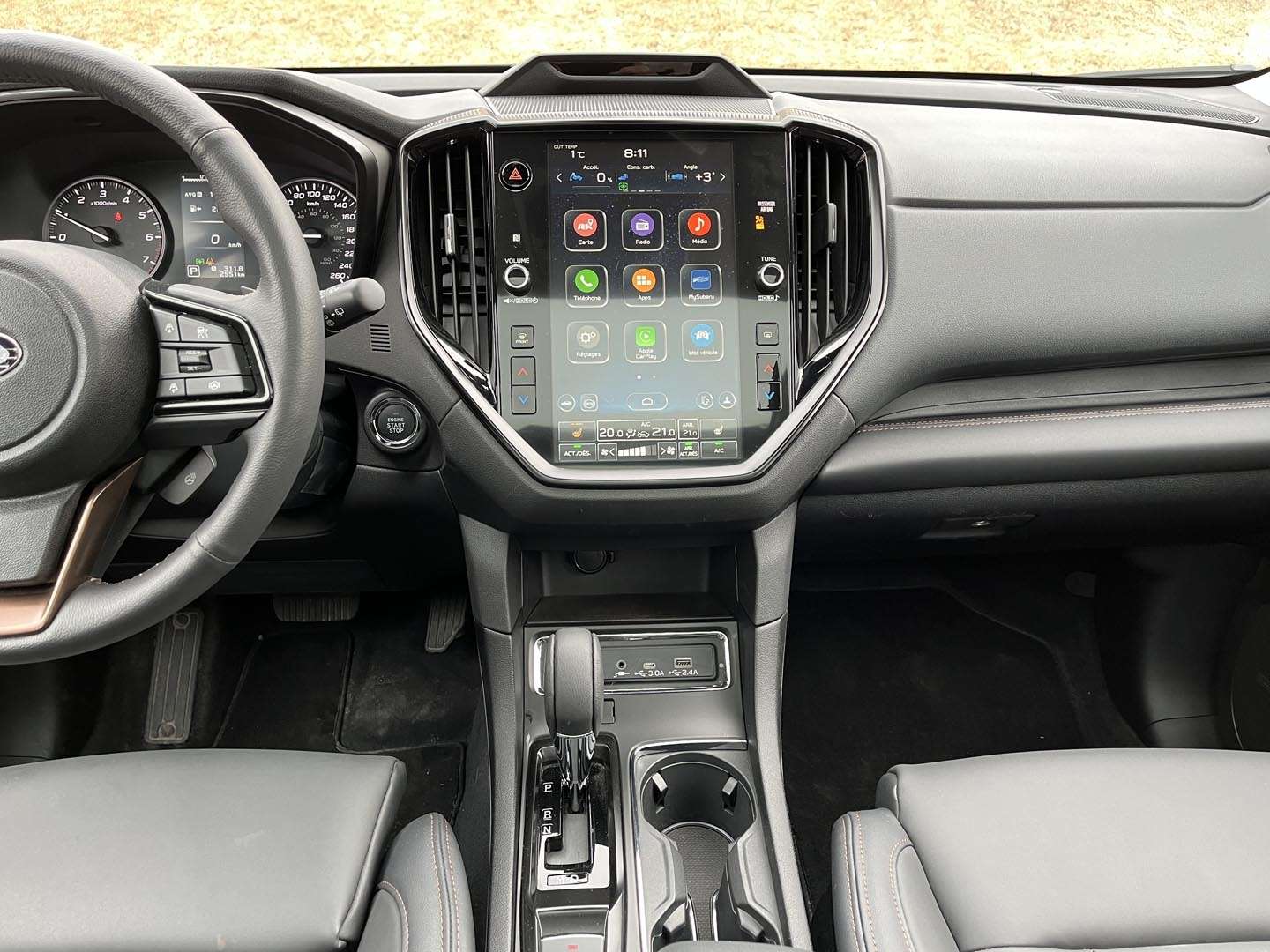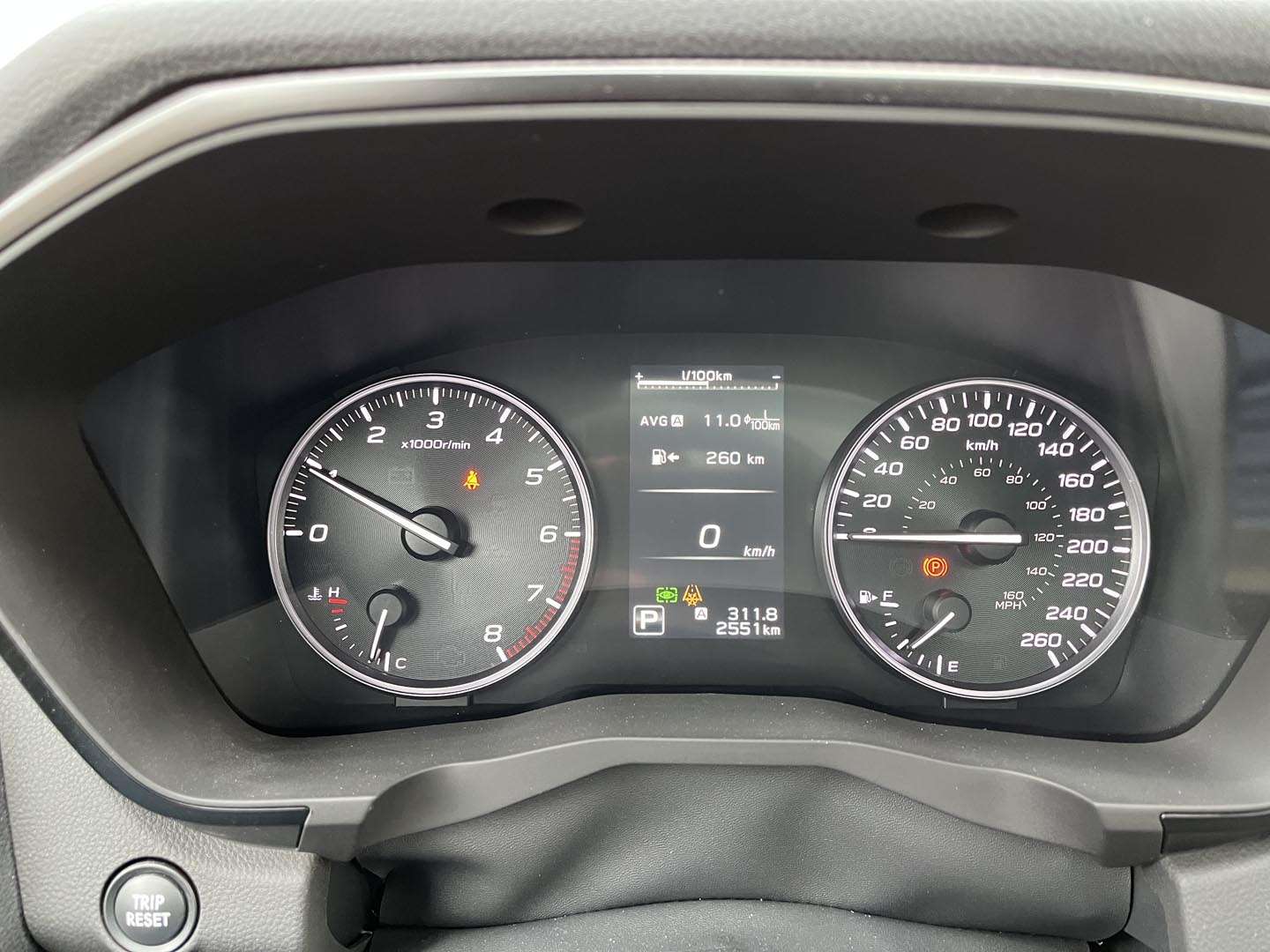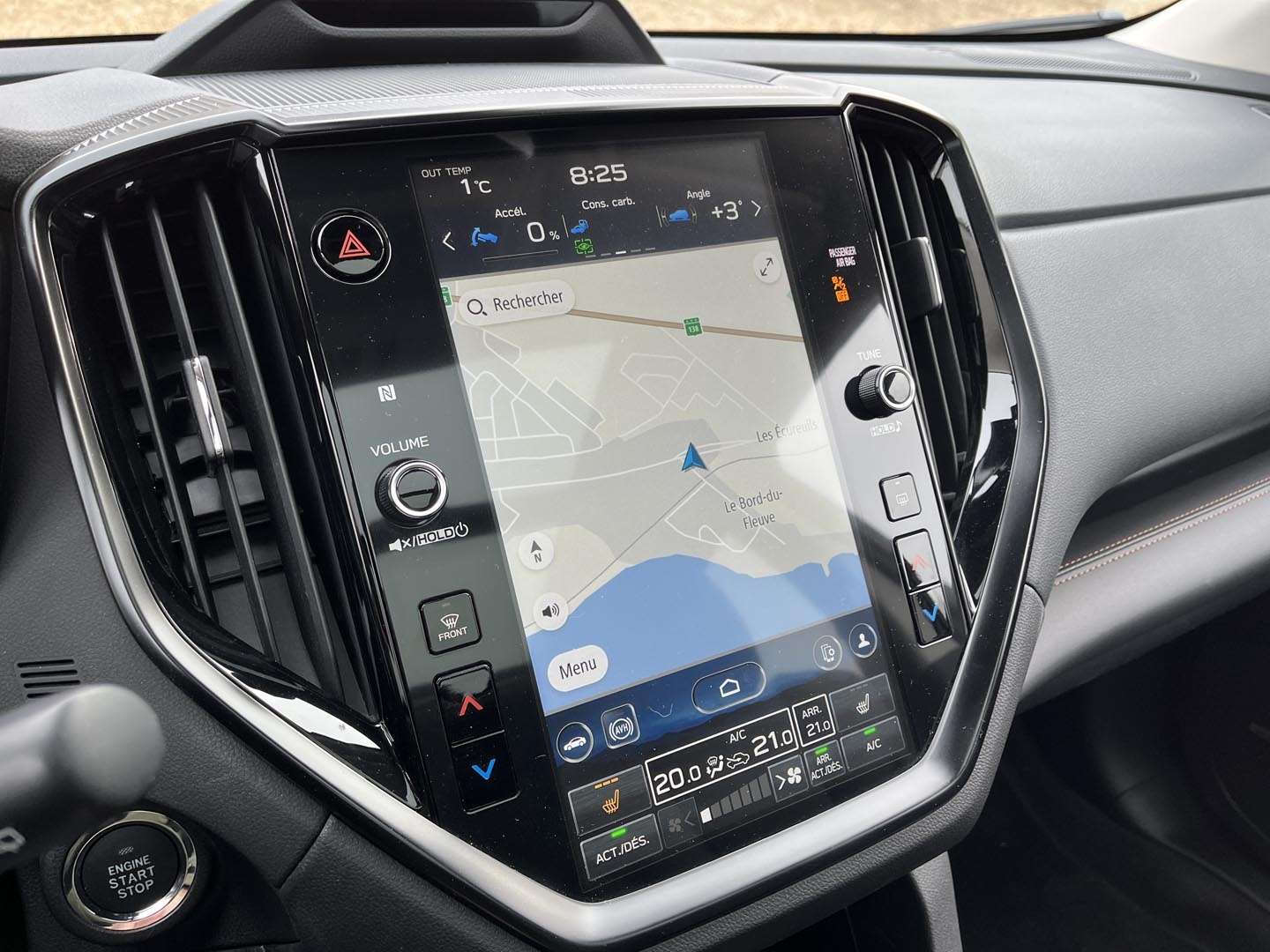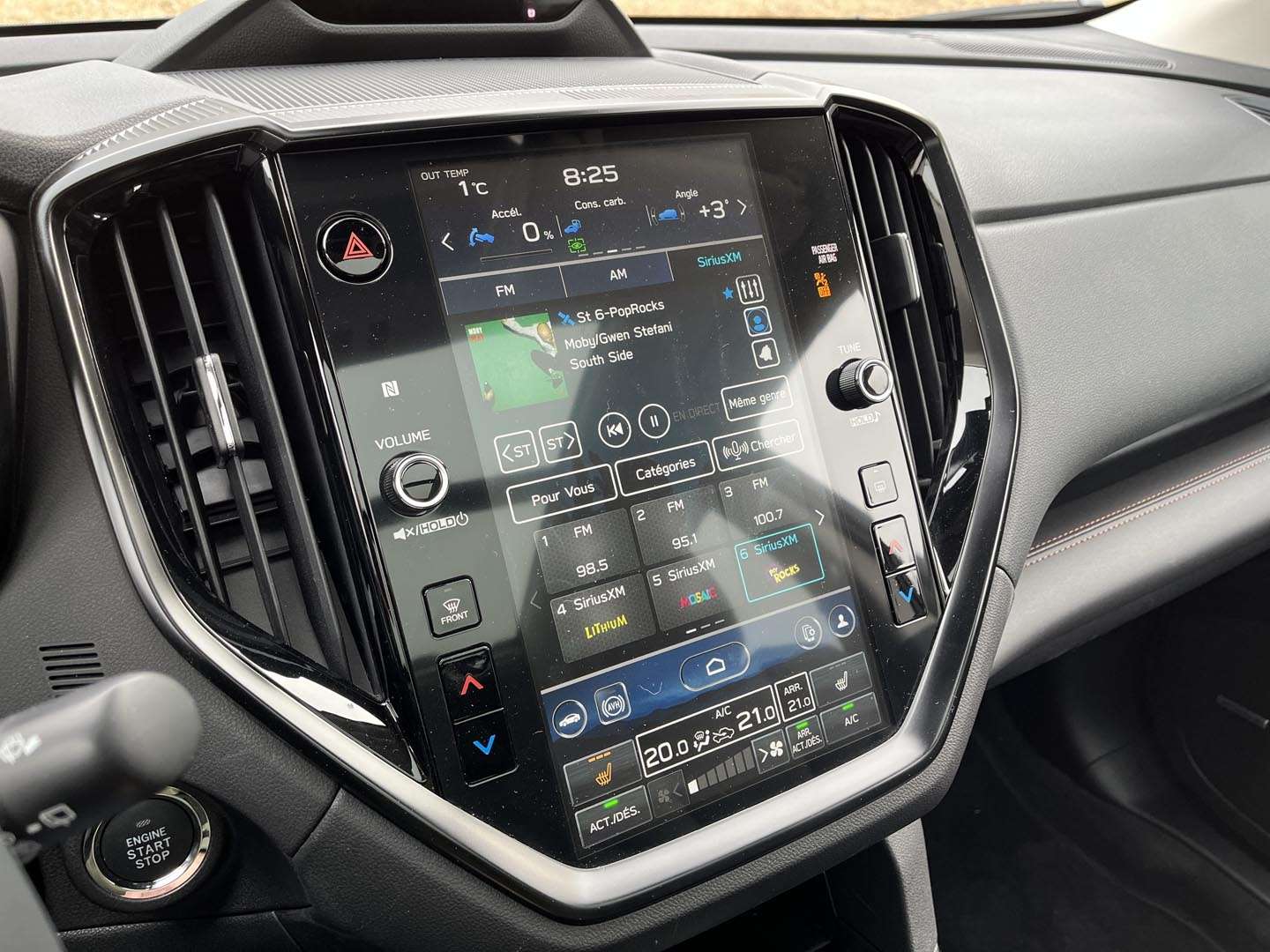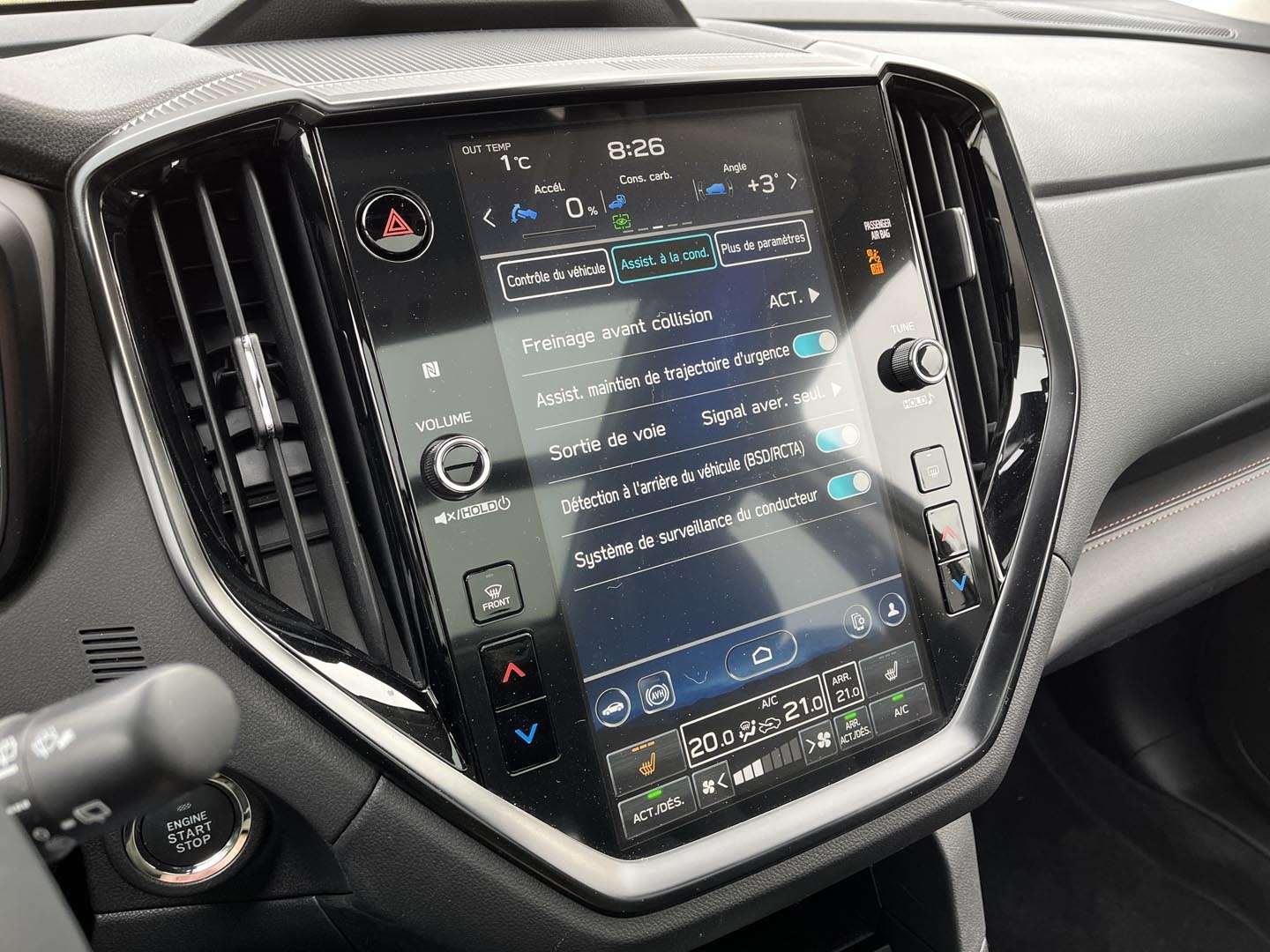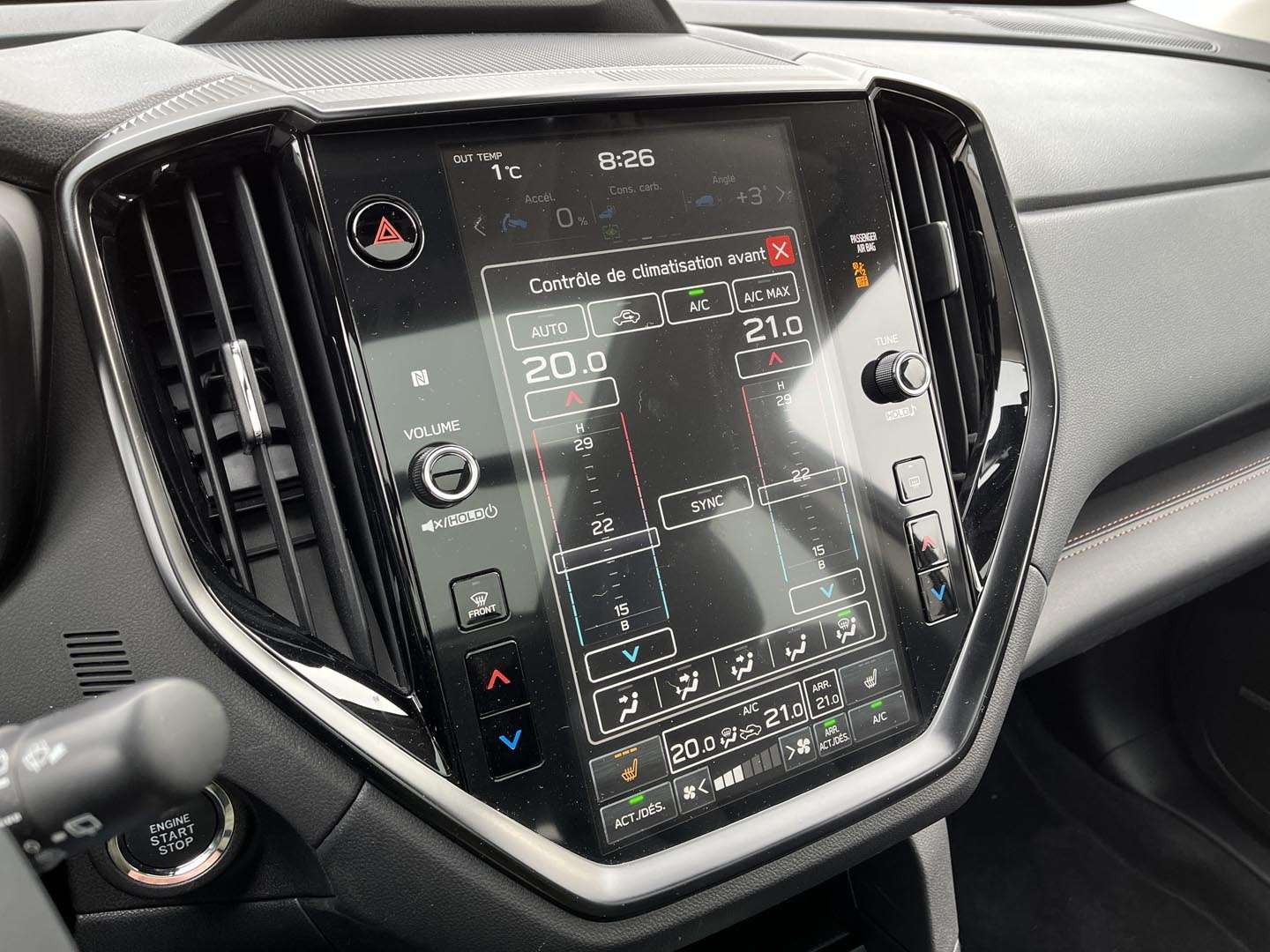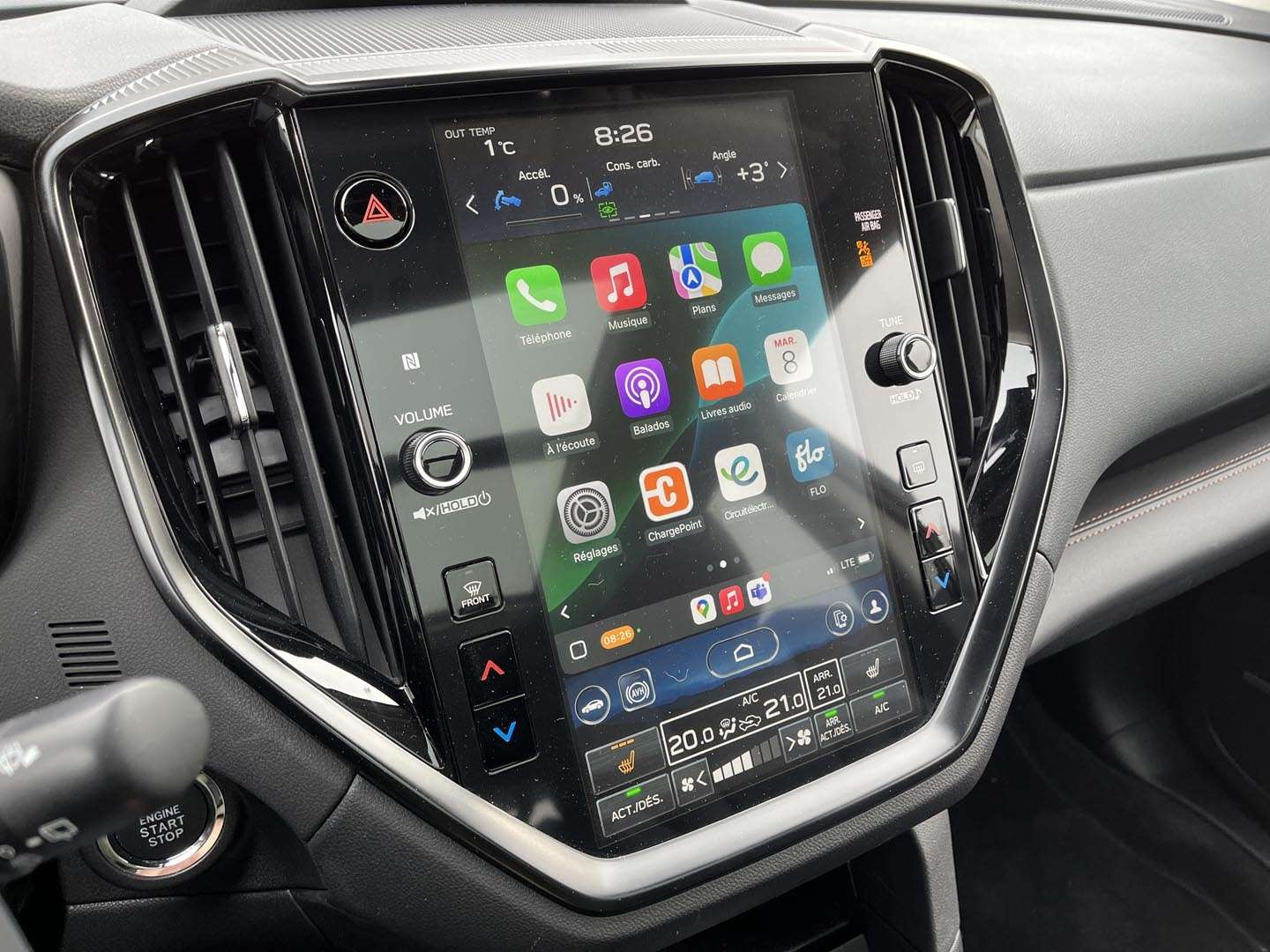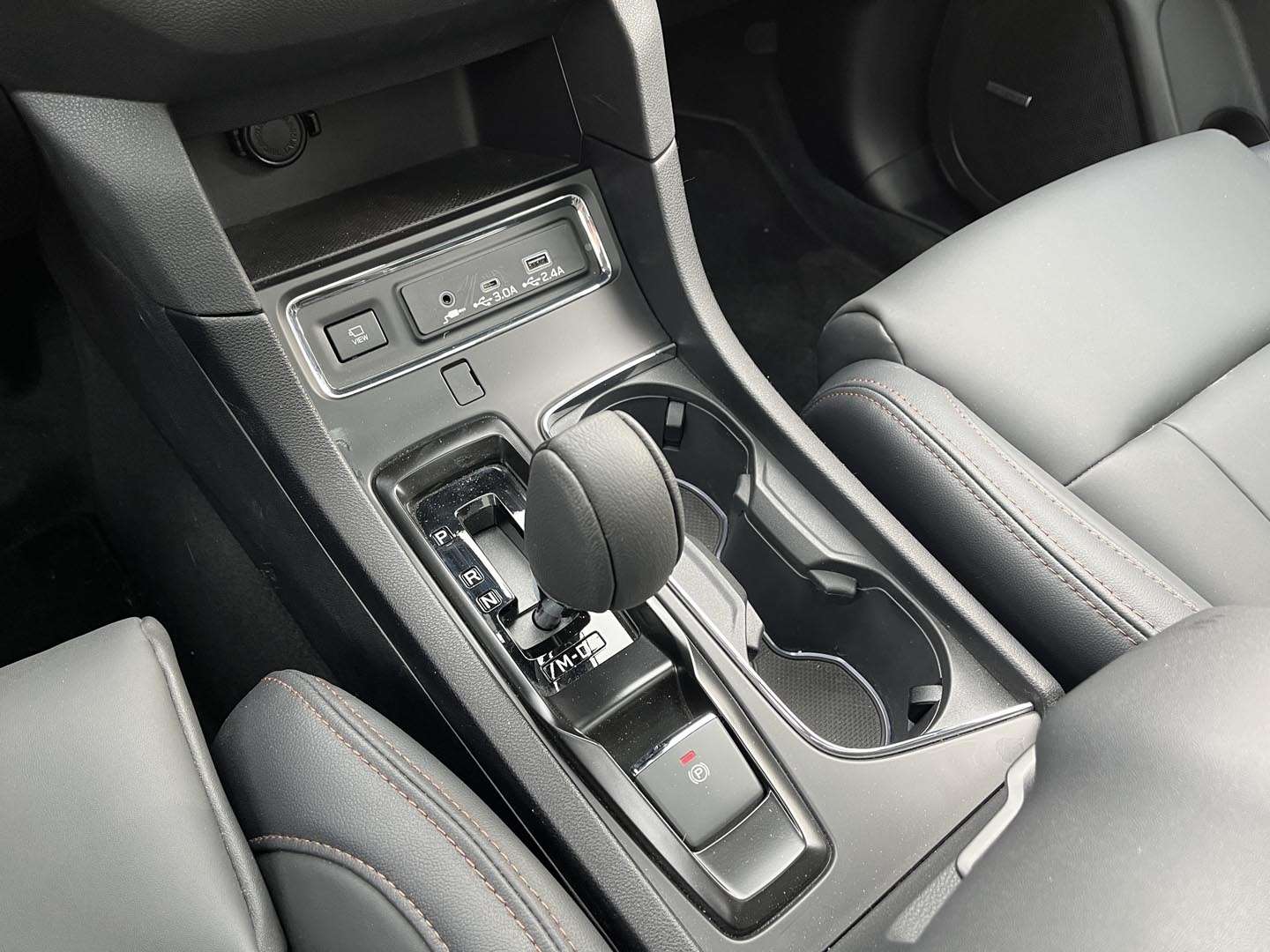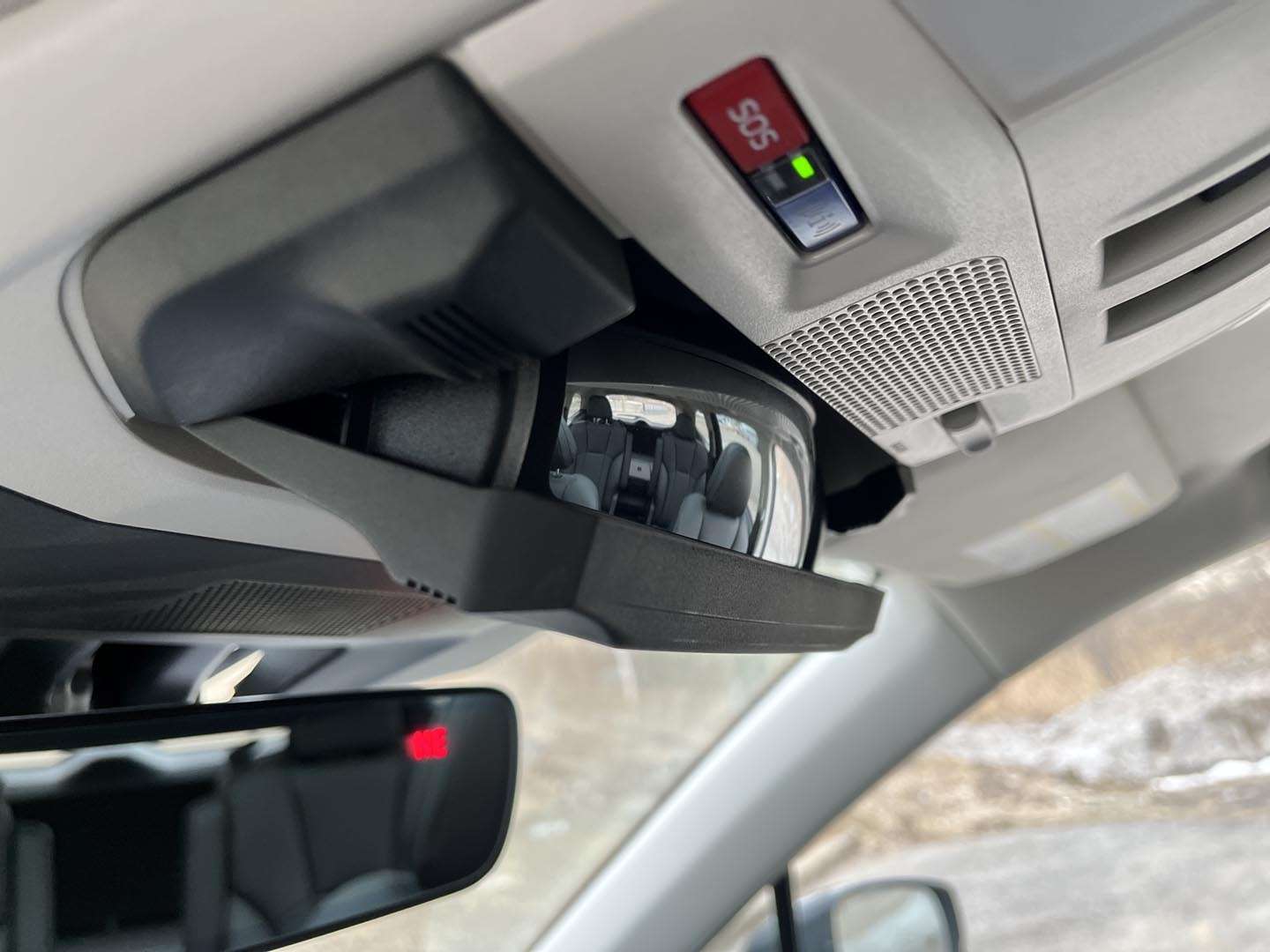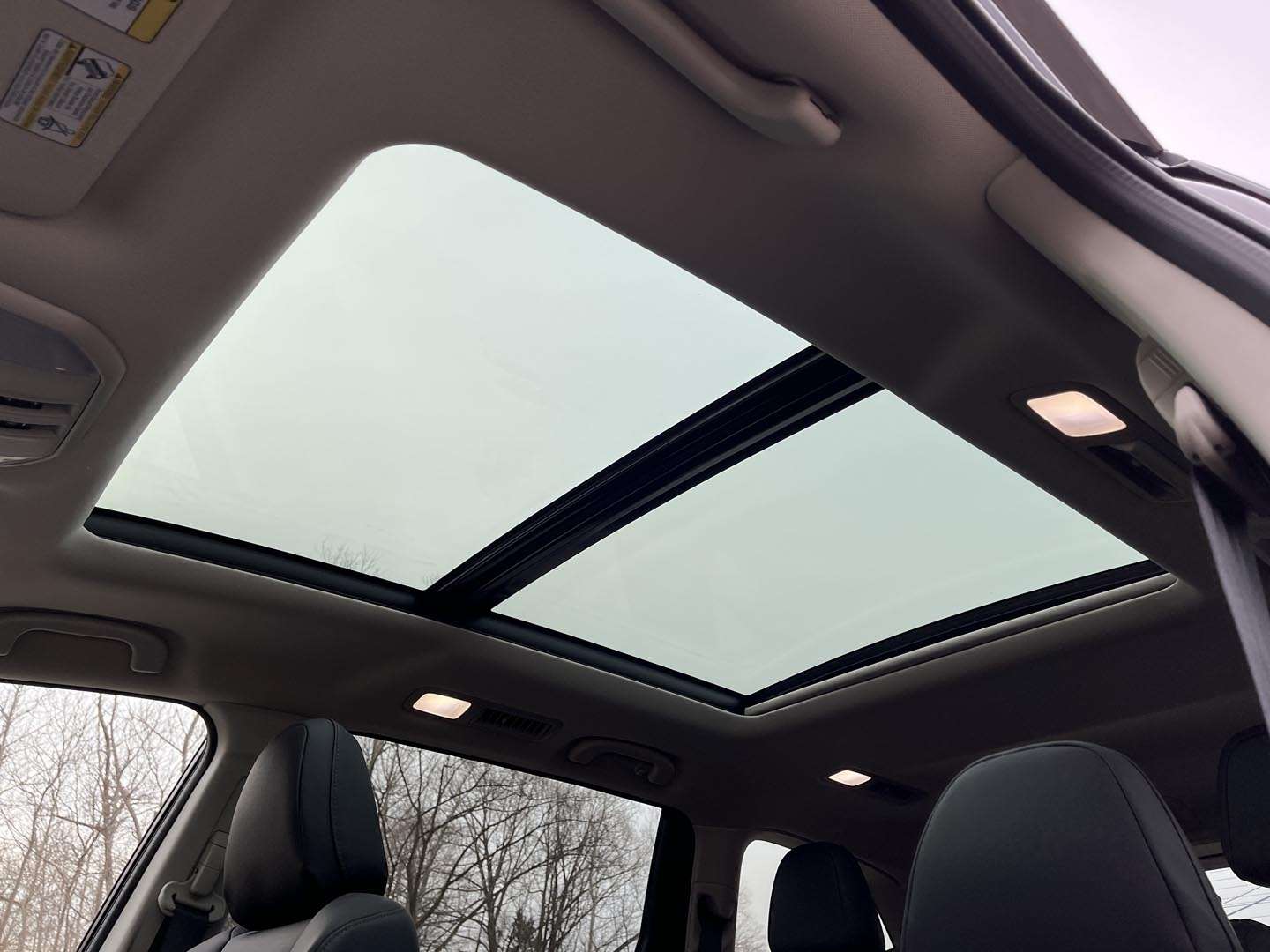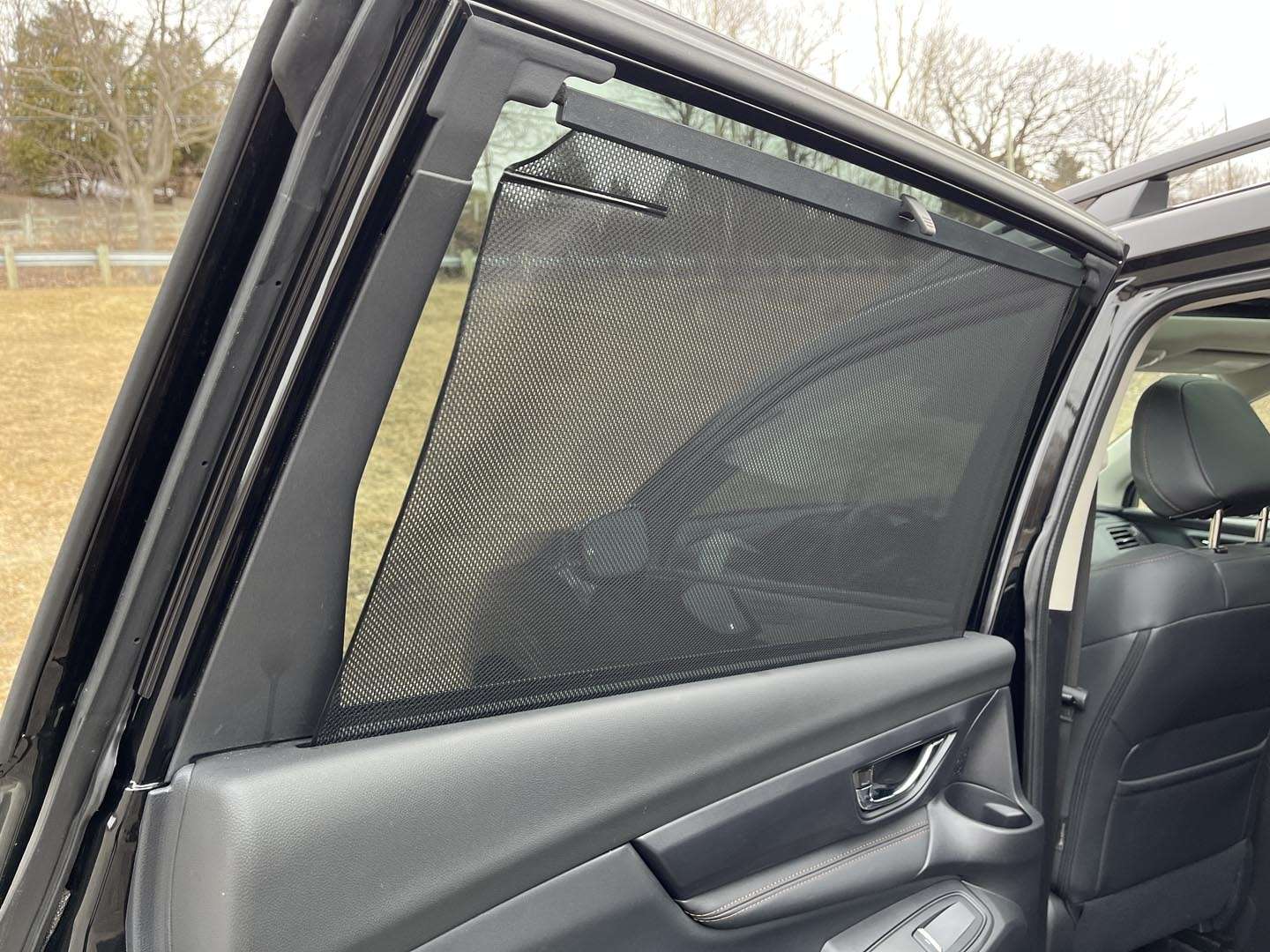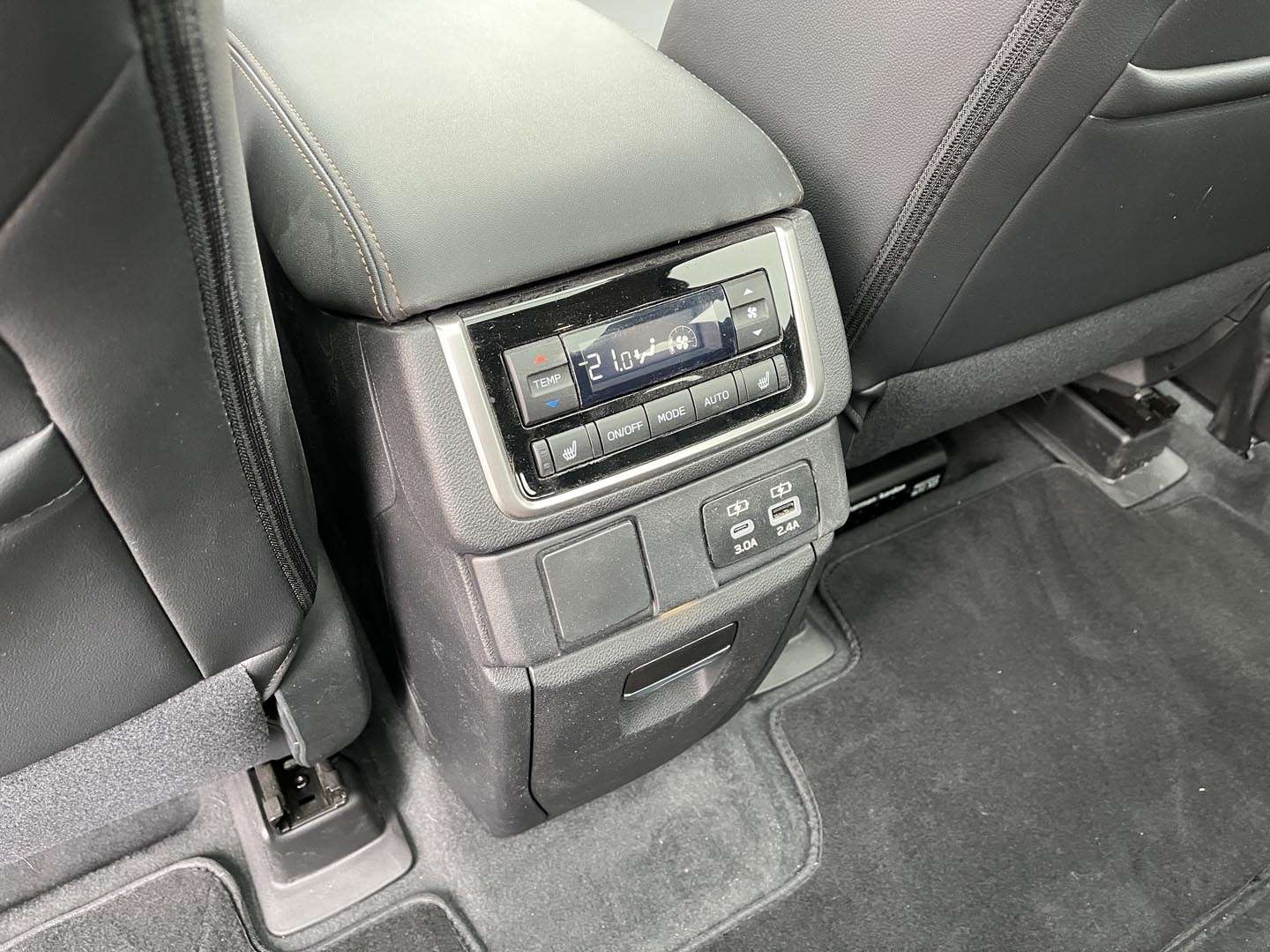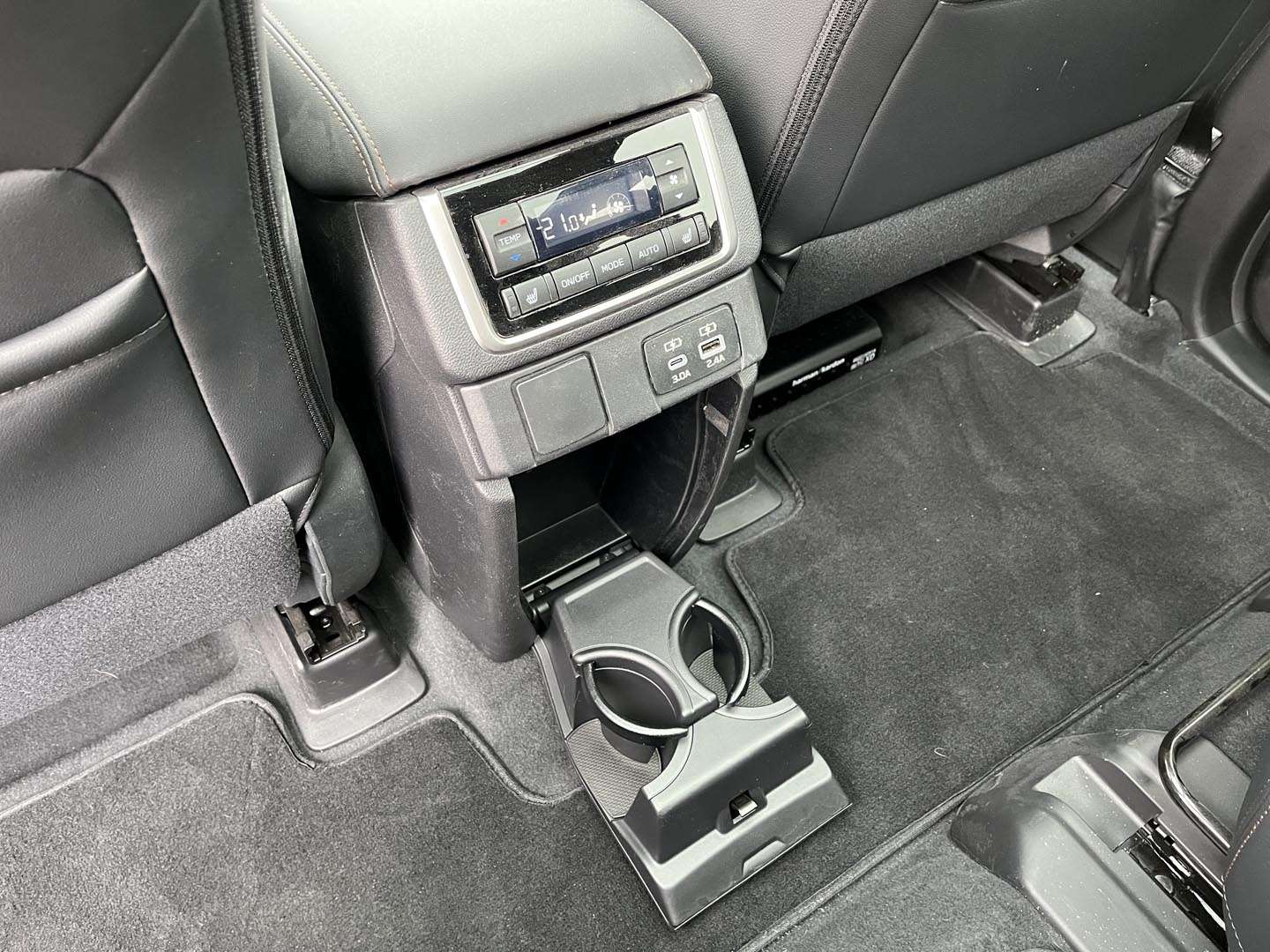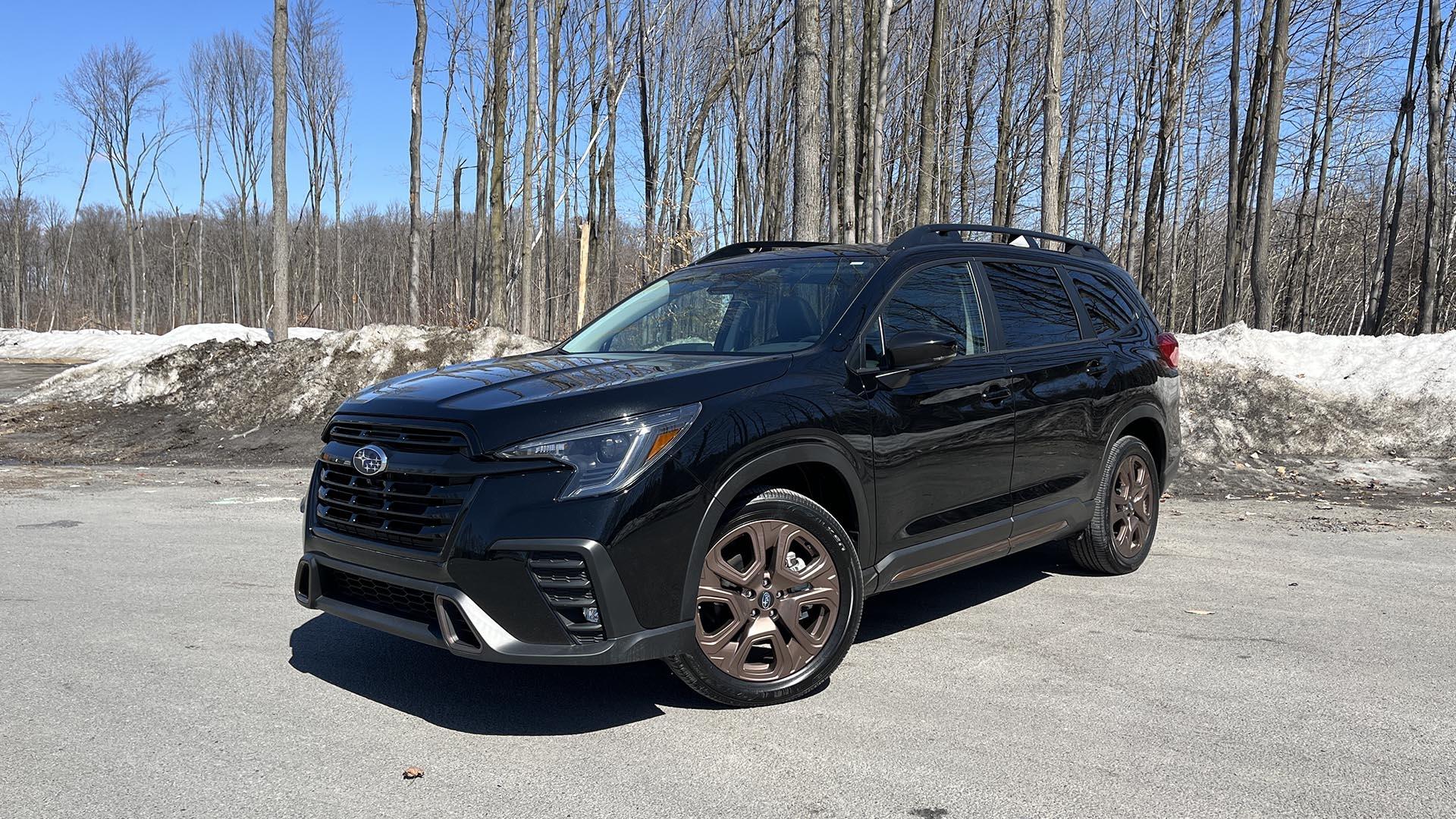
SUBARU Ascent 2025
A competent family SUV that's too often overlooked
Pros and cons
Pros
- Exceptional comfort (seats and suspension)
- Excellent visibility
- Stellar all-wheel drive system
- Safe and stable driving on the highway
- Interior more spacious than it appears
- Competitive price
Cons
- Noisy engine
- Disappointing fuel consumption
- Steering too light
- Noticeable body roll when cornering
- Some complex controls
- Aging technology
Overview
The Ascent marked the return of a seven-passenger utility vehicle for Subaru in 2019. The small manufacturer had attempted to break into this market from 2006 to 2014 with the Tribeca, a somewhat unusual vehicle that met with limited success, to say the least.
This is undoubtedly why the Ascent immediately conformed to the mold of other Subaru SUVs. No frills, simple and functional lines, a large glass surface—in short, primarily practical attributes that were not altered by the model's minor revision in 2023. The main new addition at that time was inside, where Subaru integrated its 11.6-inch vertical center screen.
The 2025 model year therefore represents the seventh without major changes for the largest of the six-star vehicles (look at the logo!). The most keen-eyed will have noticed the arrival of a Sport trim, which slots between the Limited and Premier at the top of the lineup. Like the similarly trimmed Forester, it features bronze-colored trim and wheels, the removal of chrome accents, and soft vinyl seat upholstery monikered as "all-season" by the manufacturer. The powertrain, however, remains the same as in other Ascents, dominated by a turbocharged four-cylinder engine, a continuously variable transmission, and full-time all-wheel drive.
Available between $49,000 and $59,000, this Indiana-built midsize SUV seems slightly more affordable than the segment average. To find out if this advantage requires sacrifices, check out the five highlights noted by our auto experts in the Evaluation section.
Verdict
Much like the Buick Enclave and the Volkswagen Atlas, for example, the Ascent is rarely among the first midsize SUVs that come up over back yard barbecue. Yet it ticks several of the boxes required for a family vehicle, starting with those related to safety. Its all-wheel drive excels in winter and its driver assistance systems are among the most efficient in the industry. Not to mention its remarkable visibility, a Subaru hallmark.
Its particularly comfortable ride also makes it ideal candidate to navigate our poorly maintained road network. Even the interior space is surprising, thanks to its deceptive dimensions, which make the Ascent appear smaller than it actually is.
However, the powertrain lacks refinement, both due to its noisy acceleration and its uneven power delivery. With their smooth and quieter V6 engines, competitors like the Honda Pilot and the Hyundai Palisade/Kia Telluride duo are more serene than the Ascent while consuming less fuel. They're also more modern inside, but none offer as good a price-to-equipment ratio as the Subaru. For this reason alone, the Ascent is worth a test drive.
Evaluation
A decent, but unremarkable powertrain
The Ascent is one of the many midsize SUVs equipped with a turbocharged four-cylinder instead of a V6. Similar to that of the Subaru Outback XT, this engine is powerful enough in most situations. However, it becomes noisy during acceleration, which overshadows its quietness at cruising speeds. The continuously variable transmission adds to this by emitting a high-pitched whine that other manufacturers are better at masking than Subaru.
Furthermore, the transmission's response time and the turbo lag sometimes cause jerky reactions—for example, when you have to quickly re-accelerate immediately after releasing the pedal. Simulated gear changes at high rpm also create jerks. This lack of refinement, however, gives way to a pleasantly responsive feel in normal driving.
Even with a relatively light foot, the Ascent's engine misses the mark when it comes to fuel economy. We measured 11.8L/100km during our test, conducted in April 2025 at least 75% on the highway. Natural Resources Canada's combined city-highway rating is 11L/100km. For comparison, the six-cylinder engine in a Mazda CX-90 Signature, much more powerful than Subaru's four-cylinder, required only 9L/100km for the same type of trip.
Priority: comfort
When we say the Ascent has fallen into line, it's not just in terms of style. It definitely favors comfort over performance, as do all other Subarus except the BRZ and WRX. Despite 20-inch wheels, the vehicle isolates occupants so well it seems to ignore road imperfections. This doesn't prevent it from offering very good straight-line stability. The picture is less positive in corners, where the body leans considerably. Handling is never compromised, and the all-wheel drive helps contain understeer (the front axle's tendency to continue straight ahead). Still, you can feel the Subaru global platform reaching its limit with the Ascent's approximately 2100kg. The very light steering and spongy brake pedal do nothing to enhance the driving dynamics.
Roomier than it looks
In theory, the Ascent can accommodate up to eight people in the Convenience and Limited trims. All other trims have two individual seats in the second row, which effectively eliminates a seat.
Is it realistic to fit three occupants in the third row? Not really, since the wheel arches restrict the width of the bench seat. By moving the second-row bucket seats forward, however, it is possible to accommodate two adults with decent legroom. If you choose to fold down the two back rows to transport cargo, you get a flat floor of 211cm (82inches), long enough to accommodate a standard bedroom door, for example.
At nearly 5 meters, the Ascent is certainly not a small vehicle, but it is a bit more compact than several rivals. Therefore, we were surprised to find that it handles cargo relatively well, especially when the third row seats are folded down. Models like the Chevrolet Traverse, Honda Pilot, and Toyota Grand Highlander are more spacious, but their additional bulk is noticeable.
A functional, but aging cabin
A growing number of vehicles today are flouting basic ergonomic principles in the name of fashion. A gear selector located exactly where the wiper stalk usually is, a headlight control lost in the maze of the central display, the disappearance of the door switch for adjusting the mirrors... There are dozens of examples in the industry, sometimes at the risk of safety.
The Ascent largely avoids this trap: almost all functions are exactly where you'd expect them, including the traditional gear lever and a trip computer flanked by a pair of perfectly legible analog gauges. This is just as well, because the results are mixed where Subaru has allowed style to prevail over form. We're talking here about the 11.6-inch vertical touchscreen that dominates the dashboard. Despite an update in 2023, too many functions still monopolize the driver's attention, including the HVAC controls, located at the very bottom of the screen. Response remains slow at times, and the graphics look a bit cheap.
On the other hand, Android Auto and wireless Apple CarPlay work smoothly. The Limited, Sport, and Premier trims offer a kicker Harman Kardon audio system, in addition to a practical manually adjustable thigh support for the driver, like those found in BMWs. The very comfortable front seats, meticulous assembly, and excellent visibility are all familiar Subaru attributes also found in the Ascent.
As for the dashboard, relief is coming: the 2026 Outback will feature a completely redesigned touchscreen, rearranged horizontally, which will be supported by a bank of physical buttons entirely dedicated to climate control. You can bet that this setup will migrate to all Subaru models as they are updated.
Cannibalized by the Outback
The midsize SUV segment isn't lacking in competition, but the Ascent's main rival likely sits in the same showroom. True, the Outback offers less cargo space with the second row up in both vehicles. However, Subaru claims the opposite when all the rear seats are folded. What's more, the same powertrain can be had in the wagon for $7,000 to $8,000 less than in the SUV.
The Ascent still has the advantage of slightly more trunk height and length, as well as a towing capacity of 2268kg (5000lb) rather than the 1588kg (3500lb) of a turbocharged Outback. Clearly, this is not enough to convince a majority of people: according to data compiled by Automédia magazine, Subaru sold almost six times more Outbacks than Ascents in 2024 in Quebec.
Safety features
- Antilock brakes with electronic brake force distribution and emergency brake assist
- Stability and traction control
- Hill-start assist
- Hill-descent control
- Front airbags
- Driver knee airbag
- Front side airbags
- Side curtain airbags
- Front and outboard rear seat belts with pretensioners
- Seven or eight adjustable headrests (front anti-whiplash)
- Rear occupant alert
- Backup camera
- Tire pressure monitor
- Forward collision warning
- Forward and rear automatic emergency braking
- Lane departure alert with automatic steering assist
- Active lane control
- Evasive steering assist
- Auto high beam
- Blind spot monitoring with automatic steering assist
- Rear cross-traffic alert with automatic braking
- Adaptive cruise control
- Surround-view monitor (standard, Sport and Premier, not available, other versions)
Crash test results
National Highway Traffic Safety Administration
- Overall score: 5/5
Frontal impact: 5/5
Side impact: 5/5
Rollover resistance: 4/5
Insurance Institute For Highway Safety
- Moderate overlap frontal impact: 3/4
Small overlap frontal impact: 4/4
Side impact: 4/4
